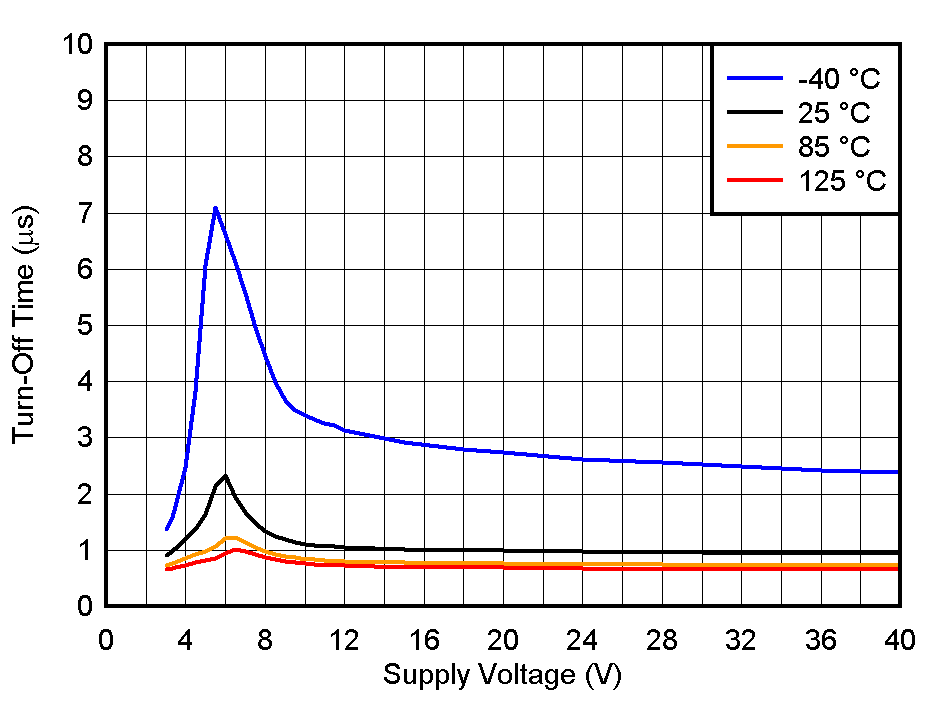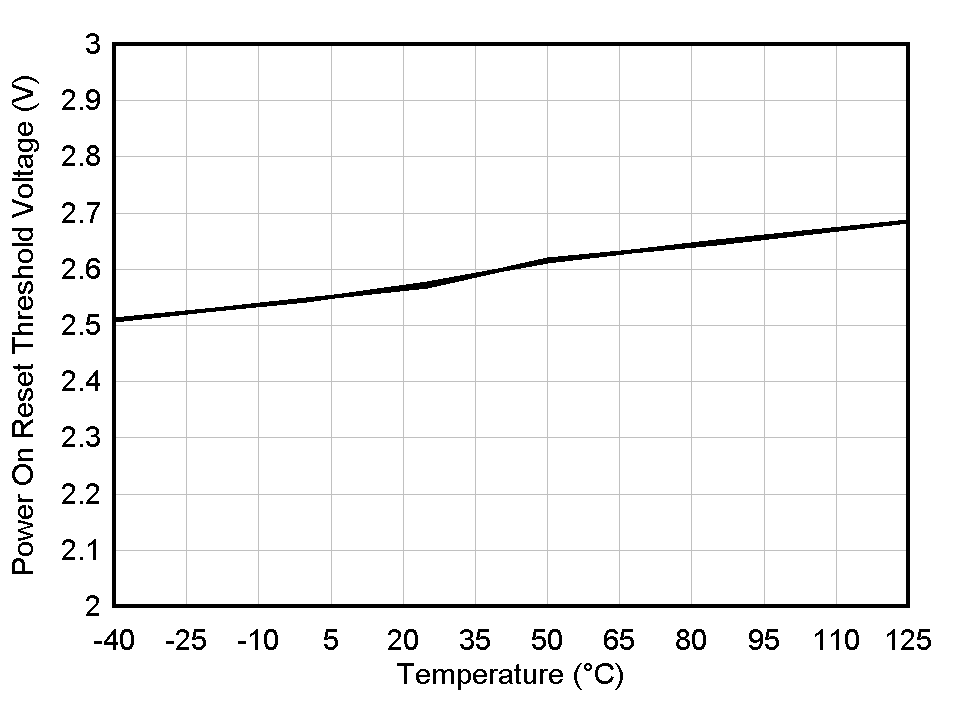ZHCSJ63 December 2018 TLV1805
PRODUCTION DATA.
- 1 特性
- 2 应用
- 3 说明
- 4 修订历史记录
- 5 说明 (续)
- 6 Pin Configuration and Functions
- 7 Specifications
- 8 Detailed Description
-
9 Application and Implementation
- 9.1 Application Information
- 9.2 Typical Applications
- 10Power Supply Recommendations
- 11Layout
- 12器件和文档支持
- 13机械、封装和可订购信息
7.7 Typical Characteristics
at TA = 25°C, VS = 12 V, VCM = VS/2, and input overdrive = 100 mV (unless otherwise noted)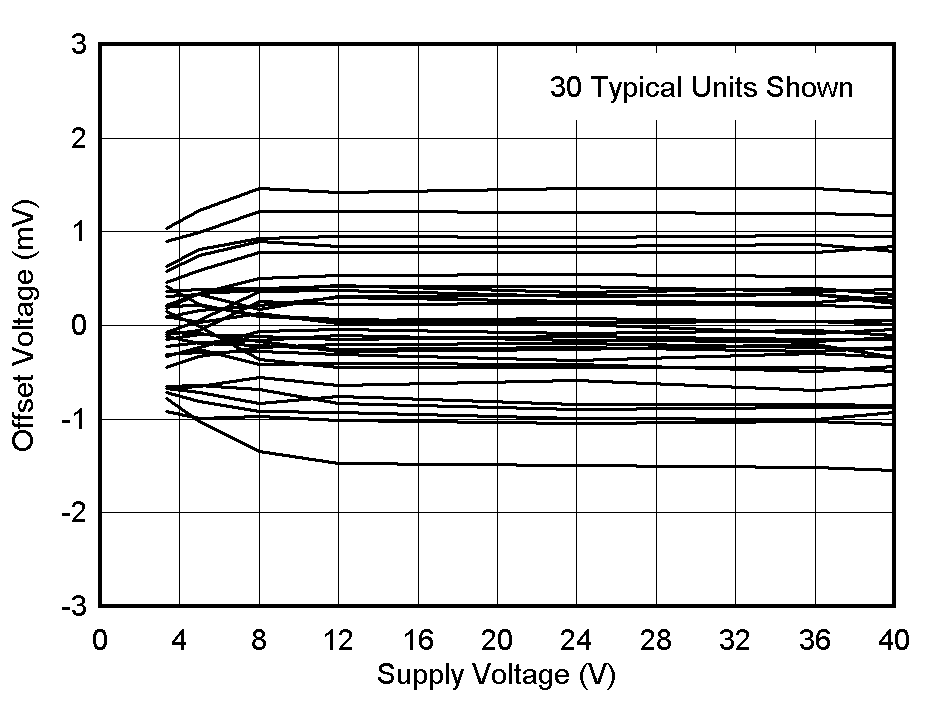
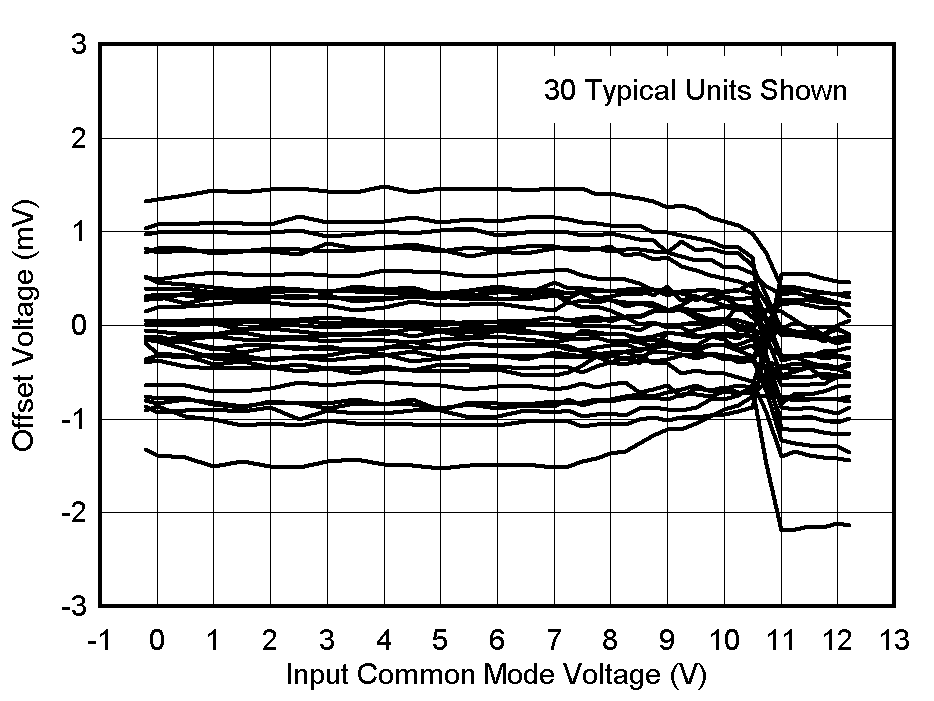
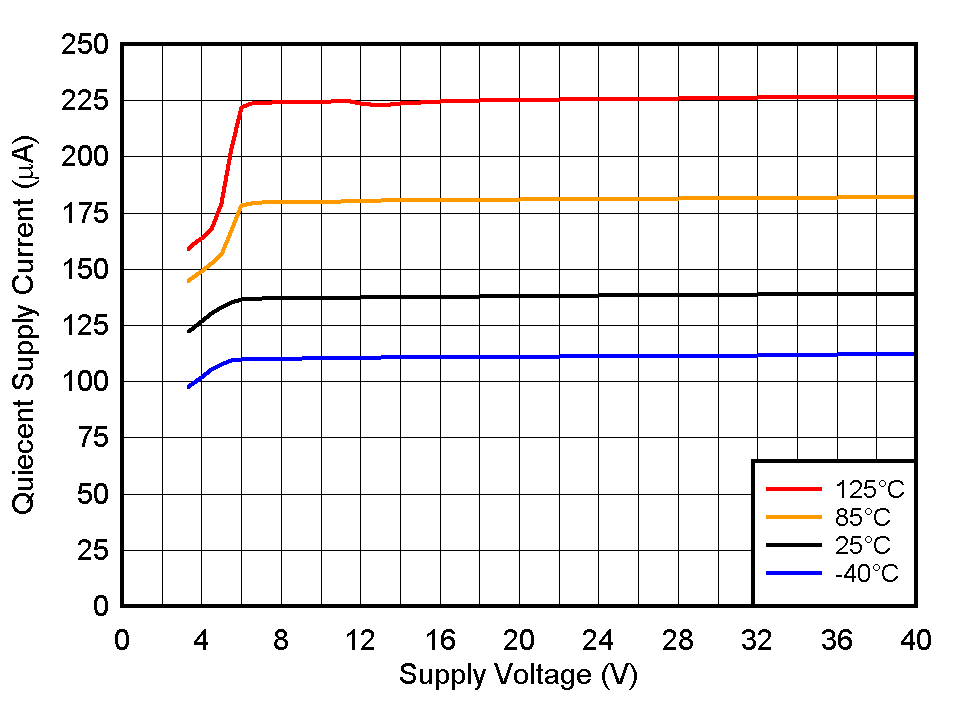
A.
Figure 7. Supply Current vs. Supply Voltage, Output Low | VCM = V- | Output Low (VID = -0.1 V) | |
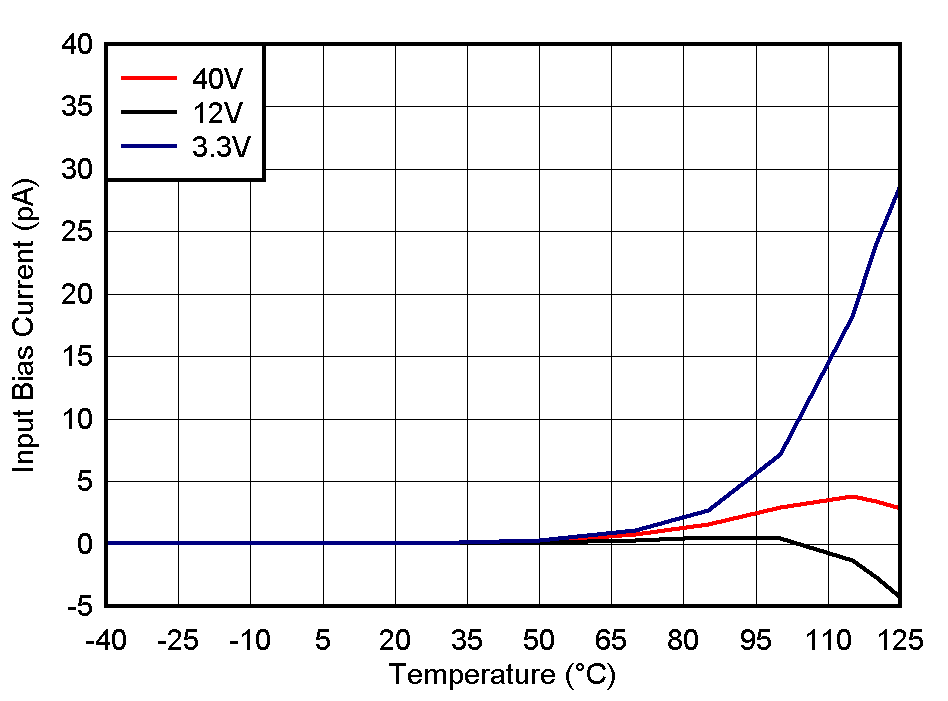
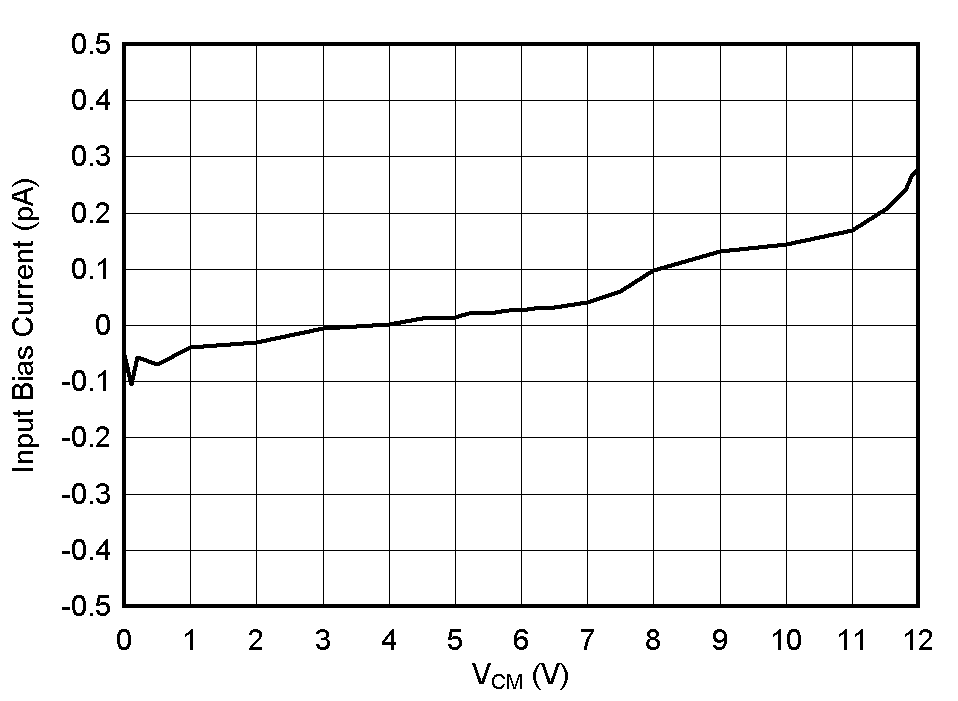
| TA = 25 °C |
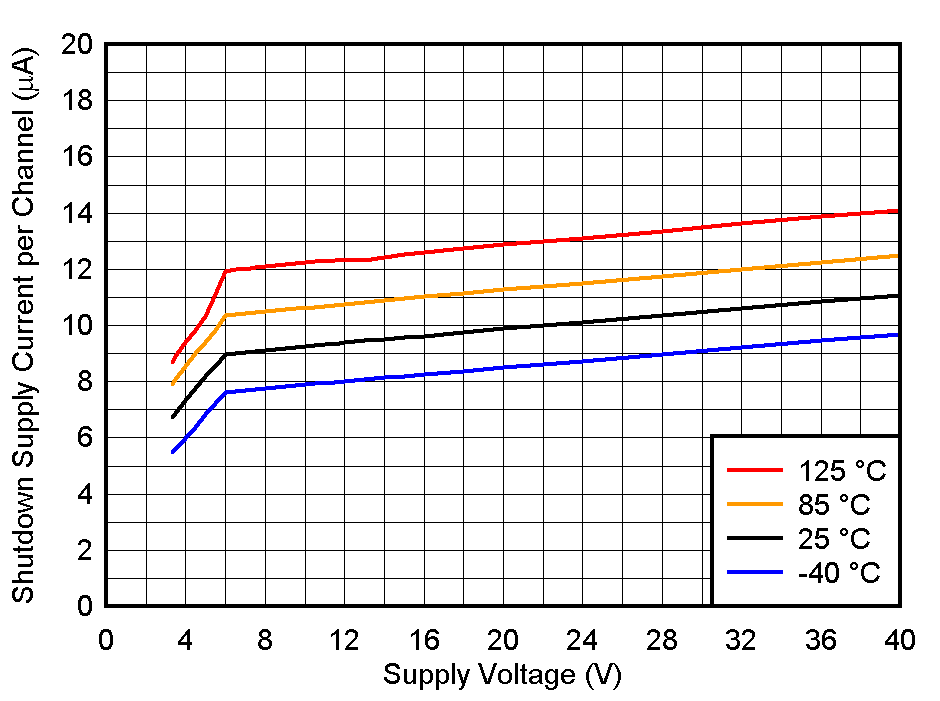
| VCM = V- |
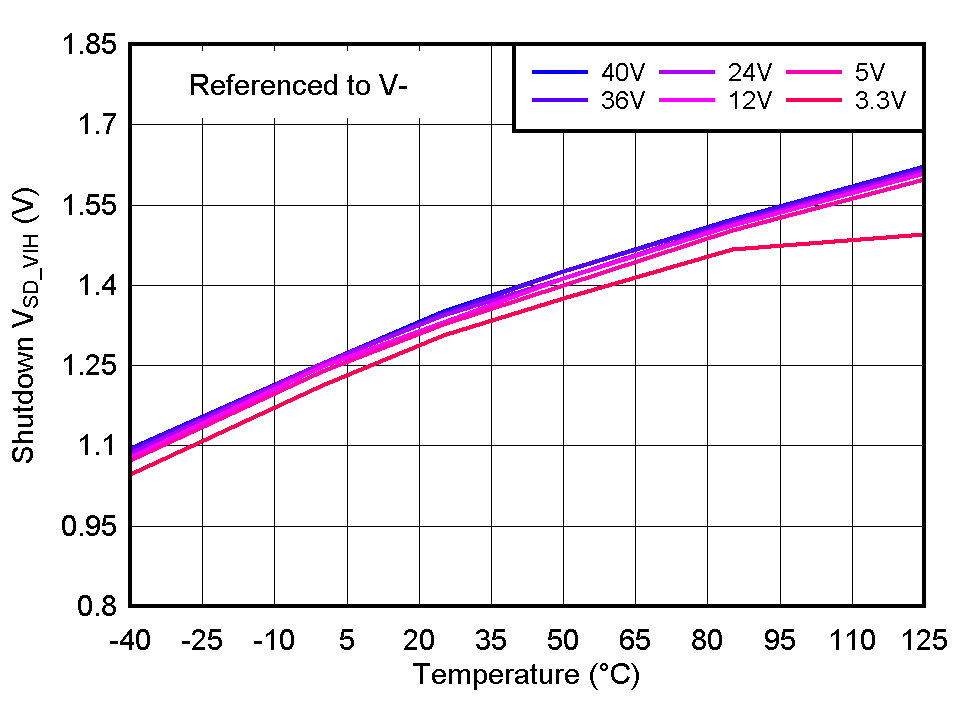
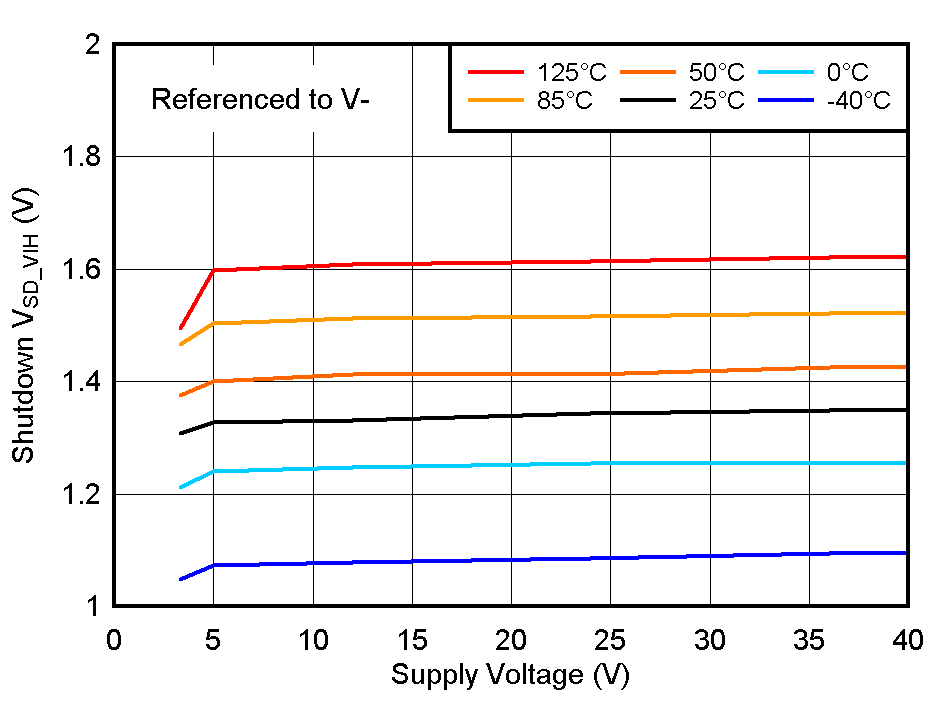
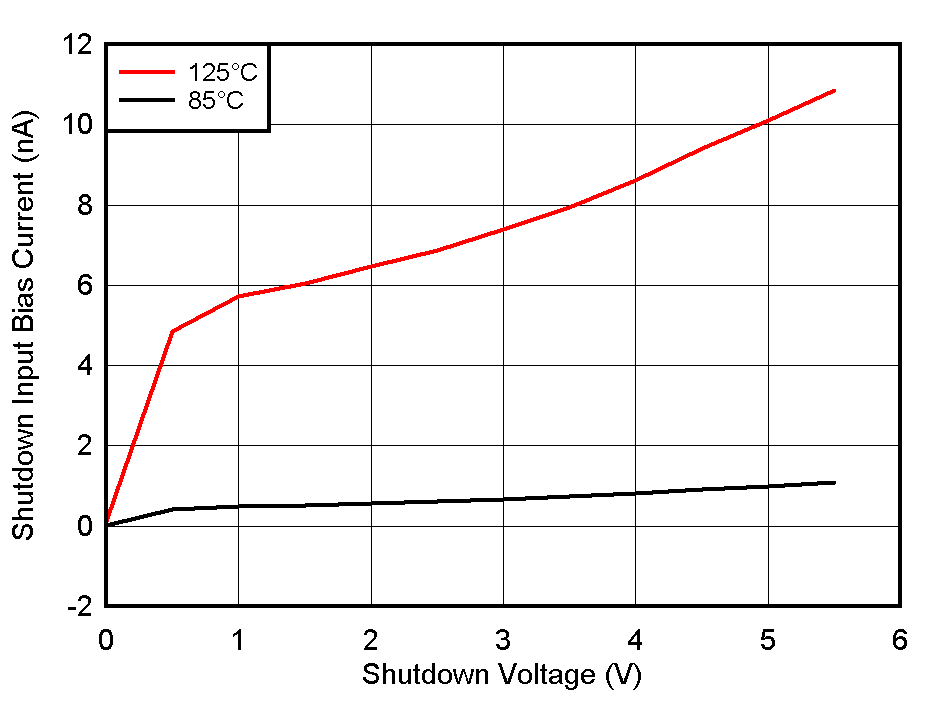
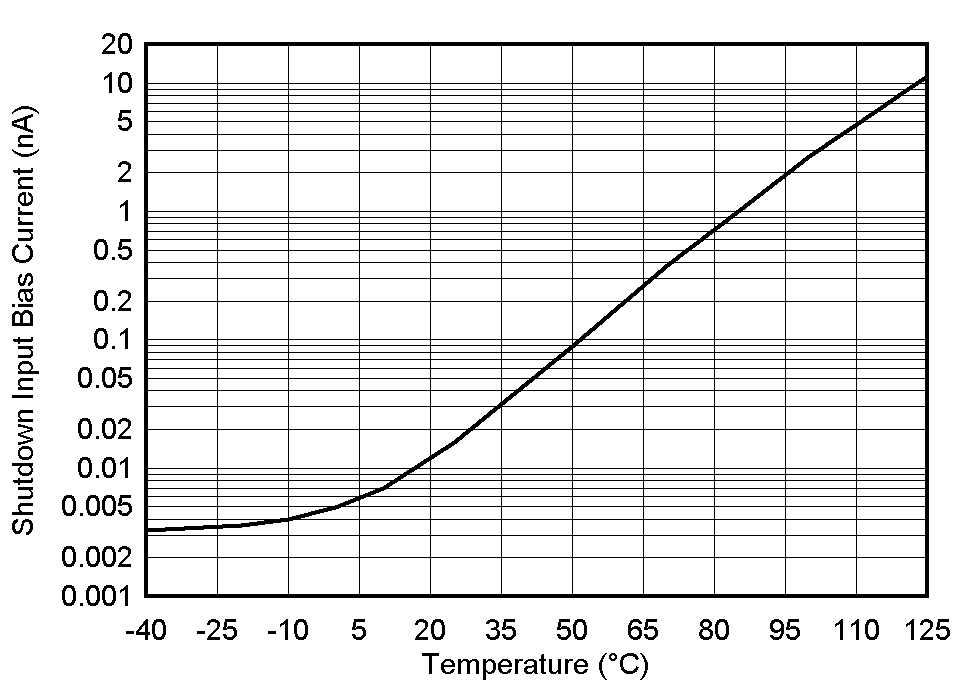
| VSD = 5 V |
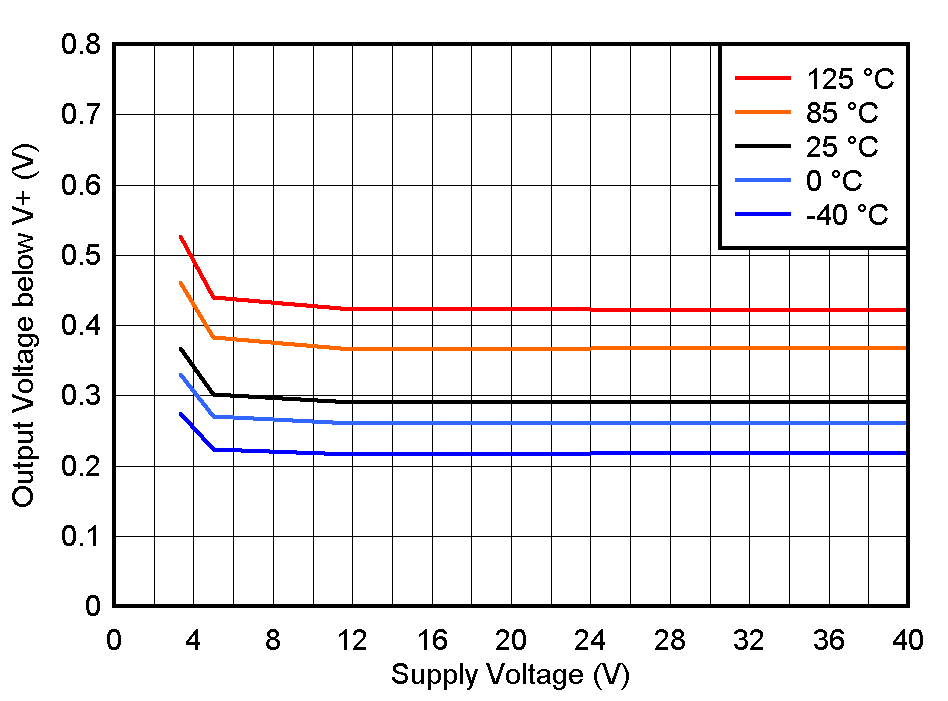
| ISOURCE = 1 mA |
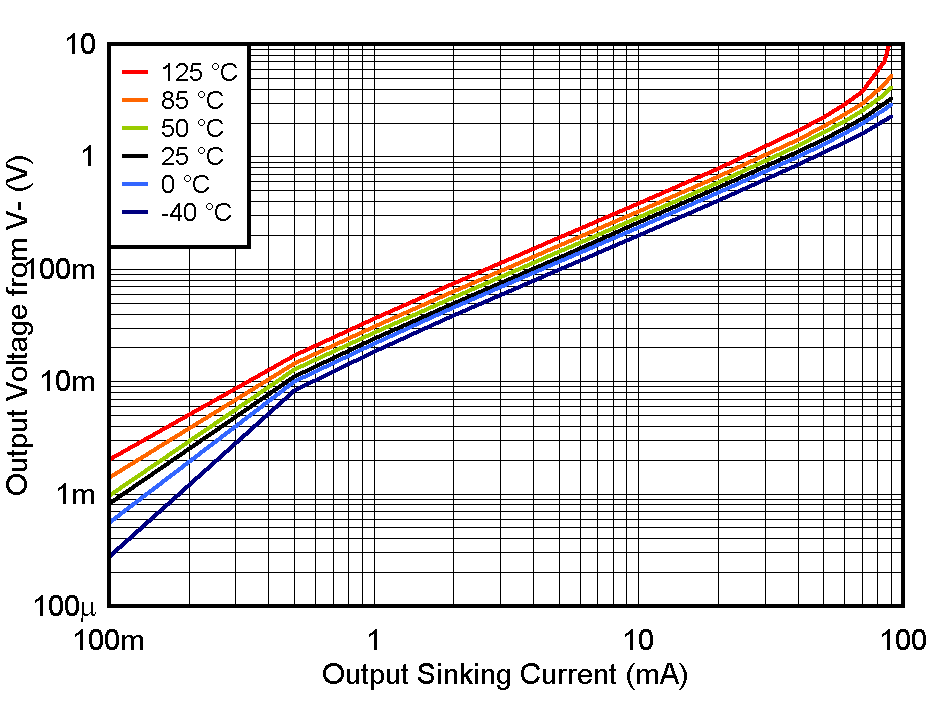
| VS = 3.3 V |
at 3.3V
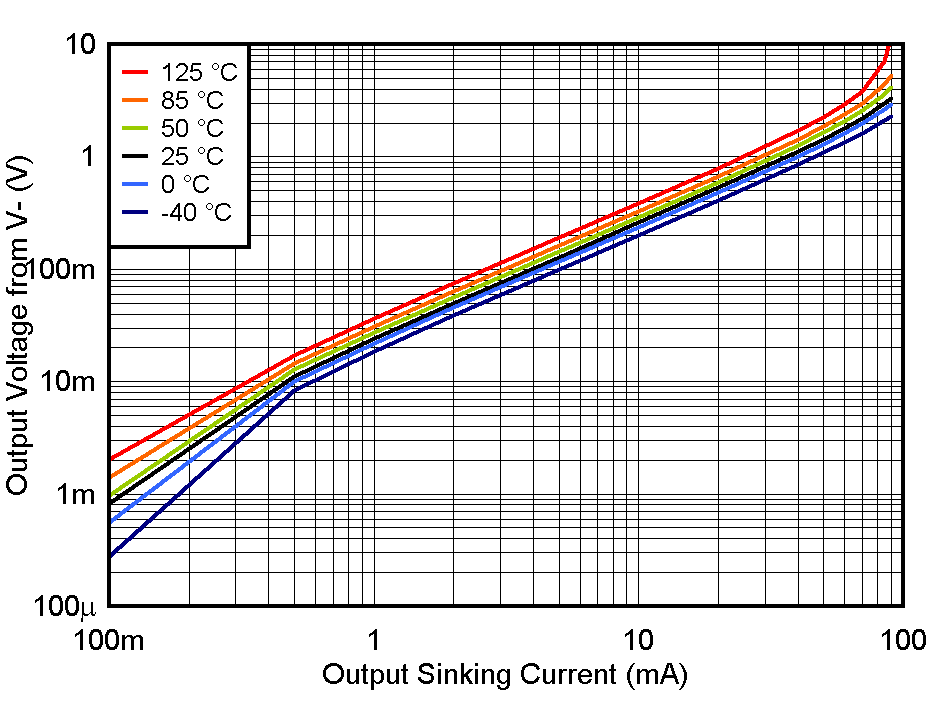
| VS = 12 V |
at 12V
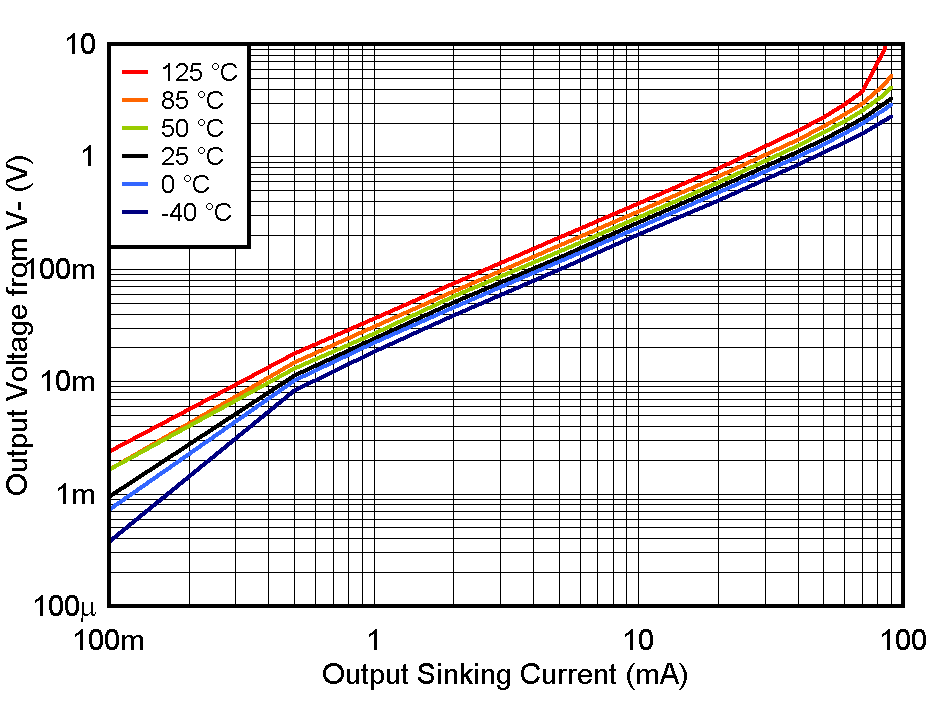
| VS = 40 V |
at 40V
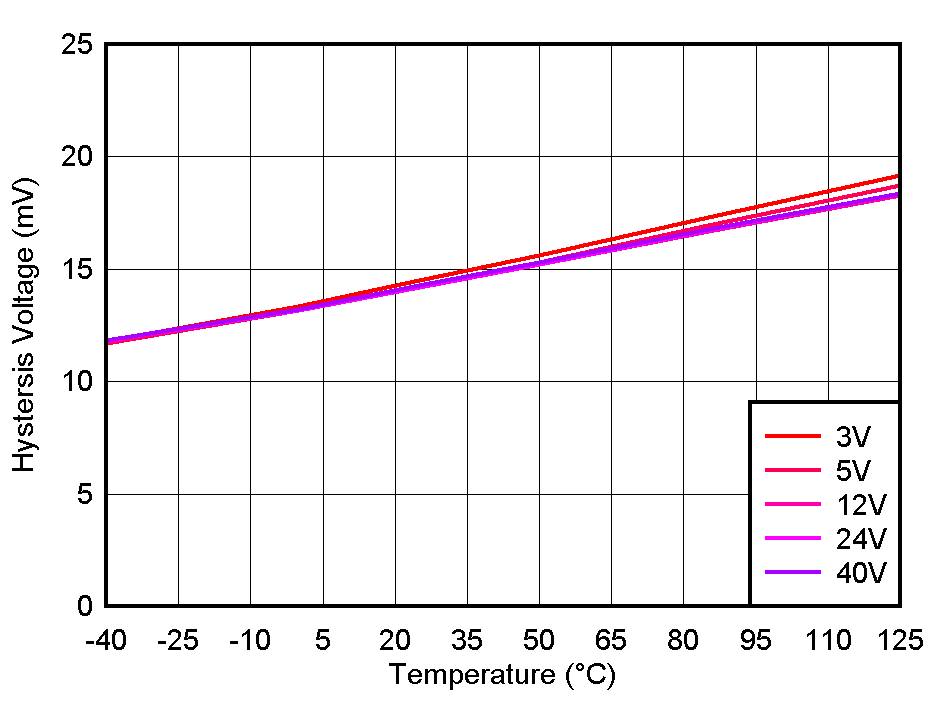
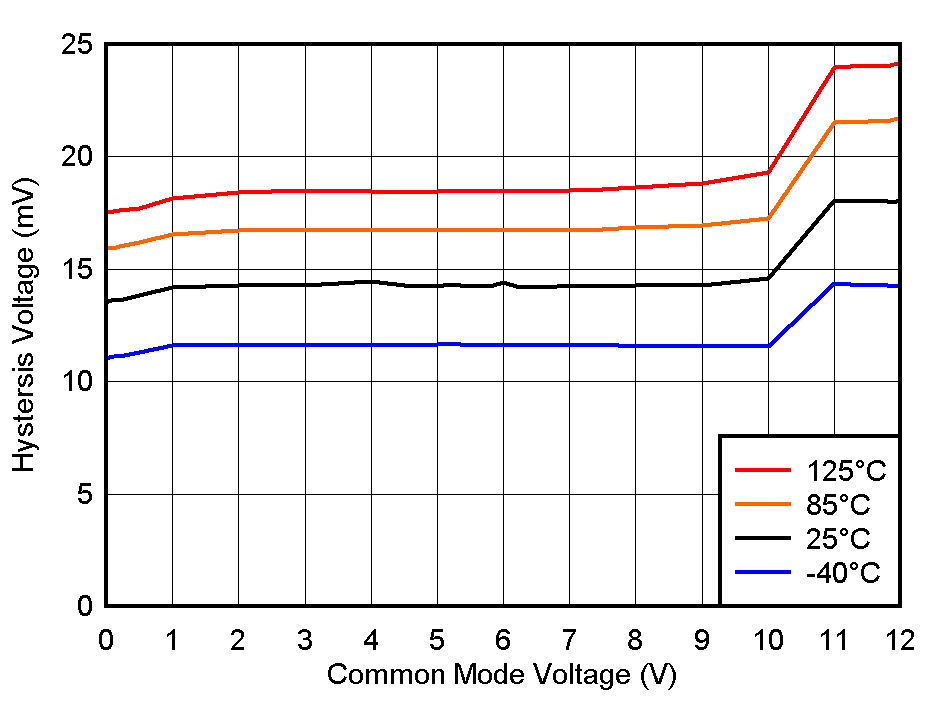
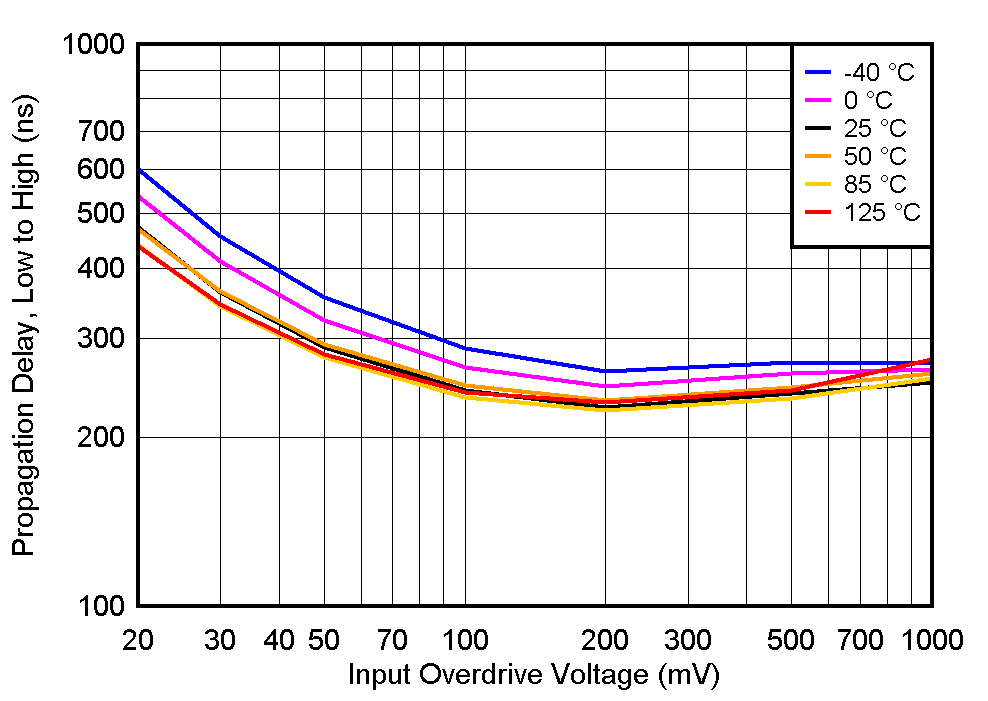
| VS = 3.3 V | CL = 15pF |
at 3.3V
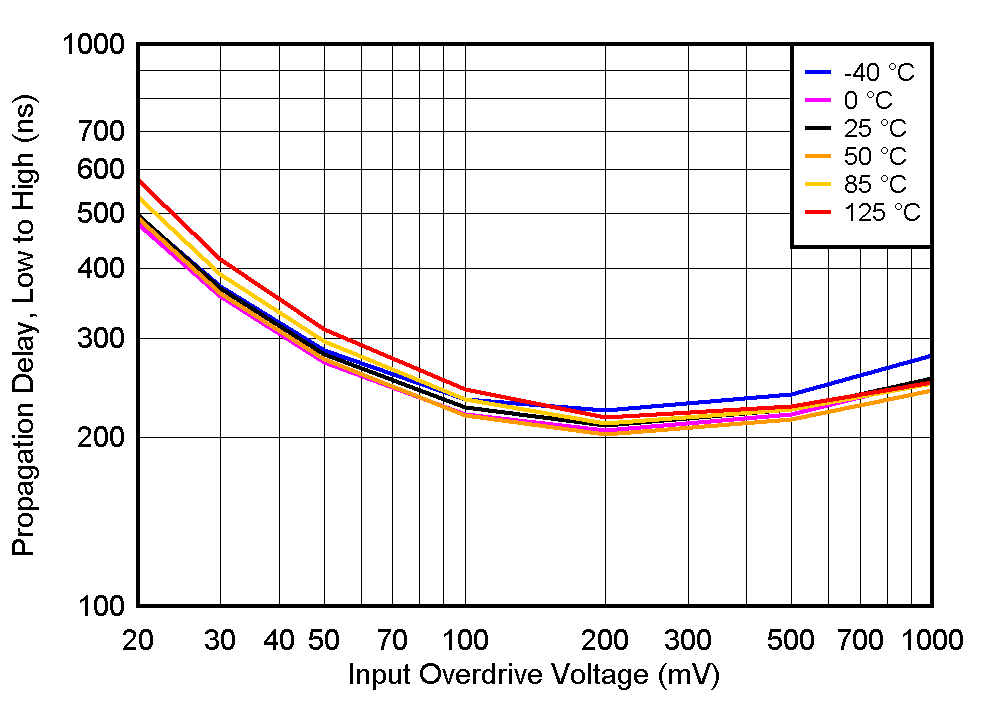
| VS = 5 V | CL = 15pF |
at 5V
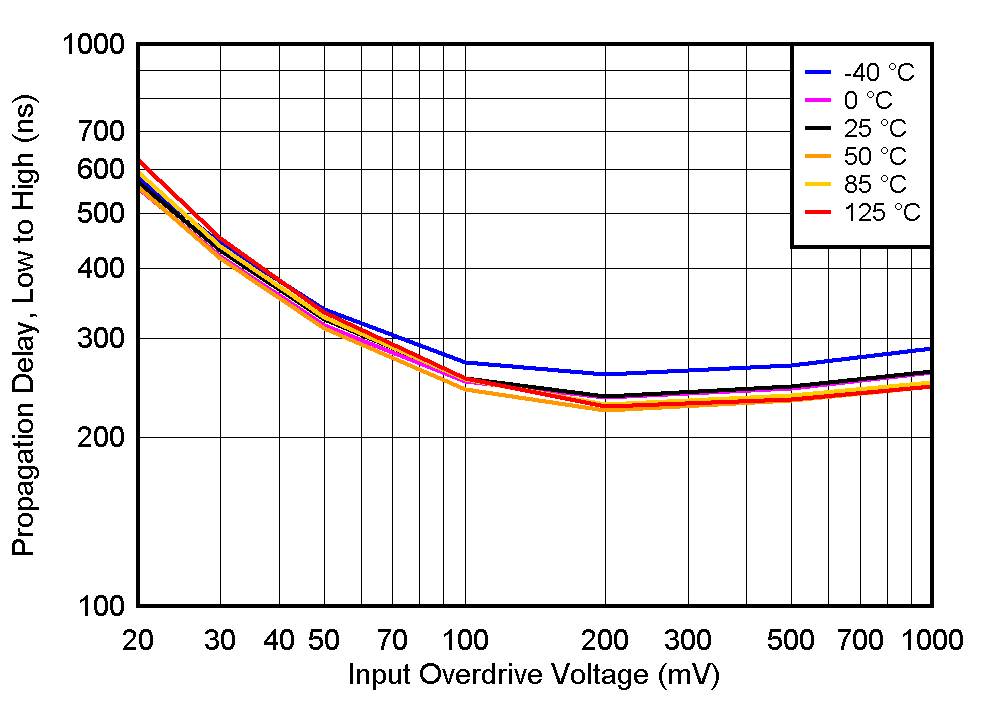
| VS = 12 V | CL = 15pF |
Overdrive at 12V
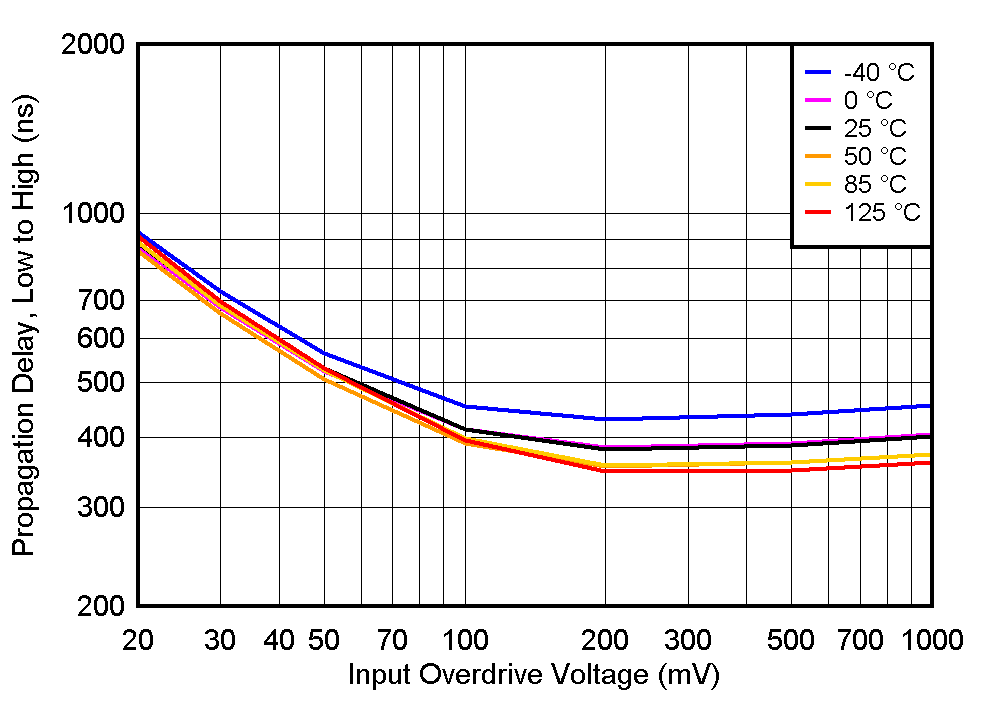
| VS = 40 V | CL = 15pF |
at 40V
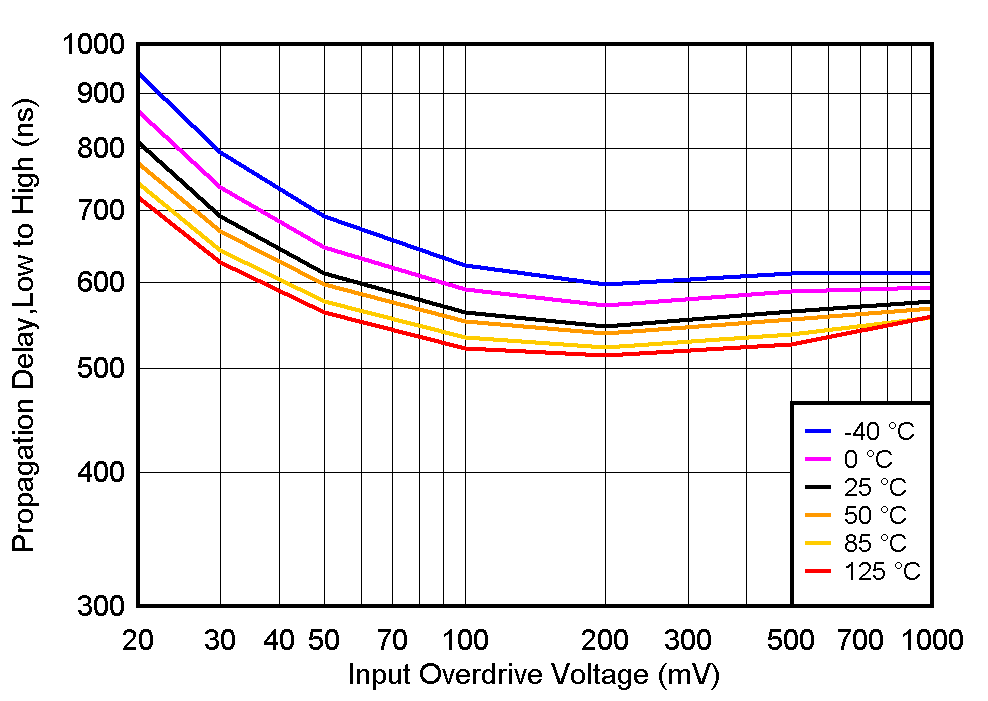
| VS = 3.3 V | CL = 4nF |
at 3.3V
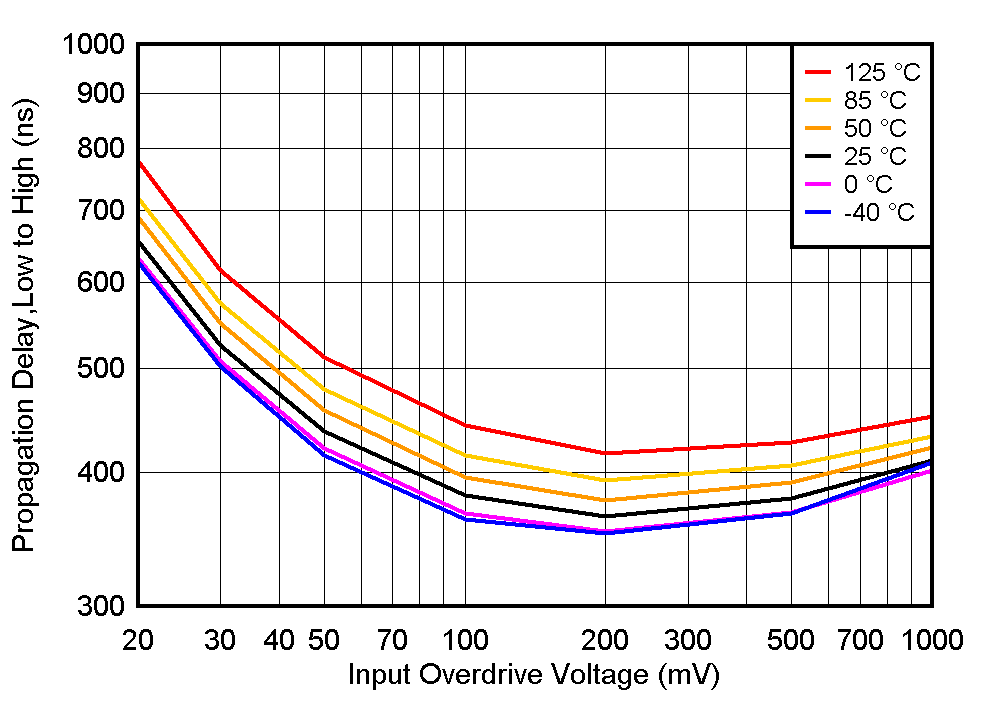
| VS = 5 V | CL = 4nF |
at 5V
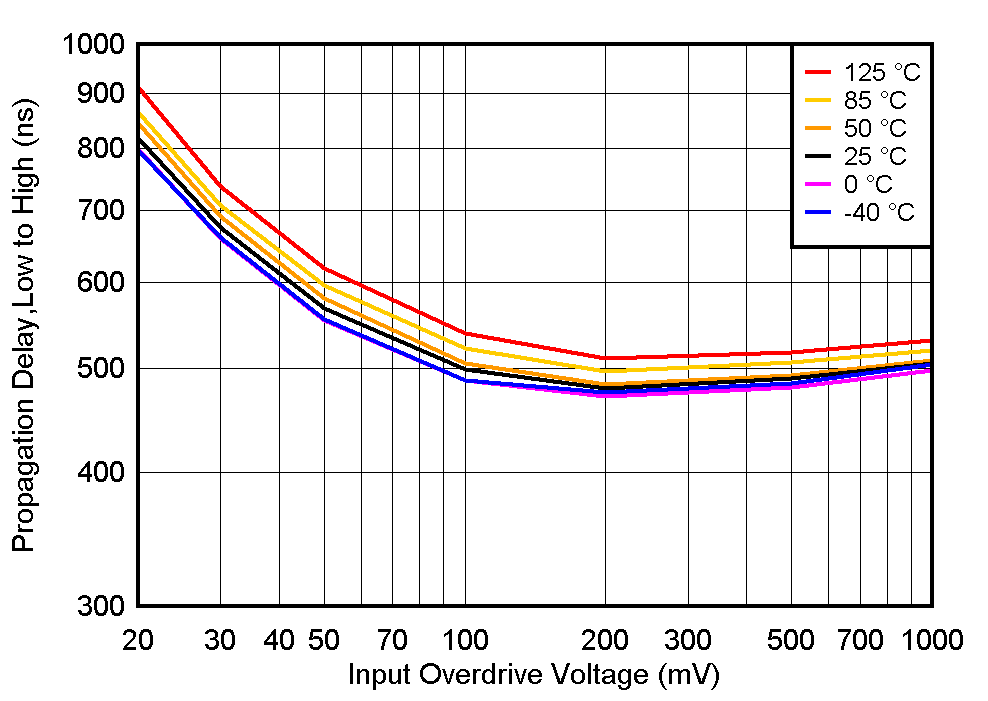
| VS = 12 V | CL = 4nF |
Overdrive at 12V
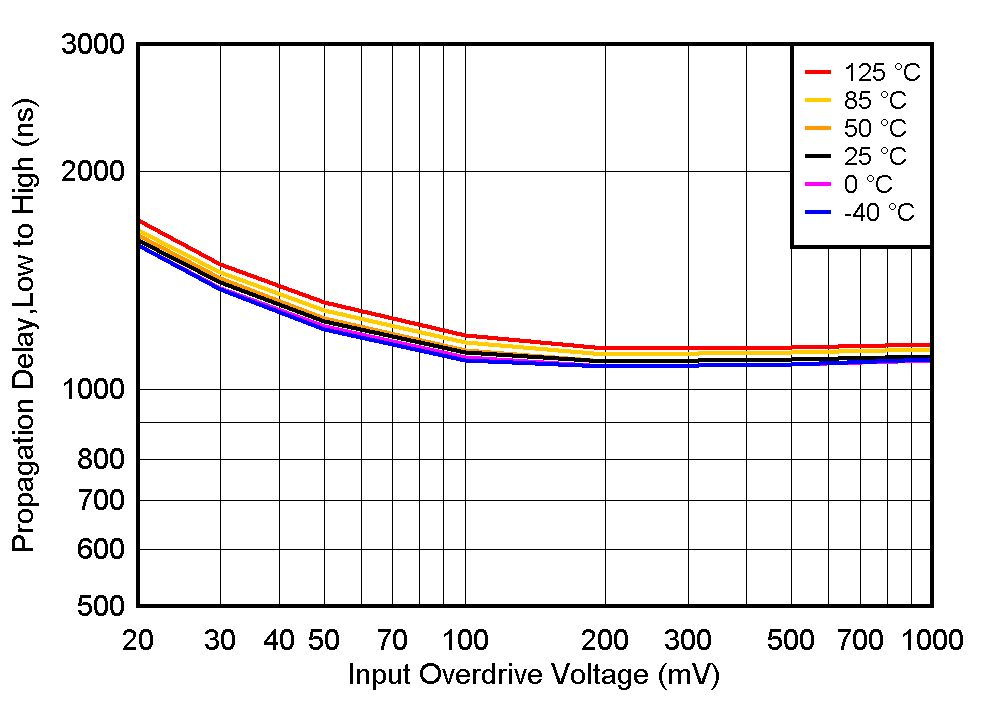
| VS = 40 V | CL = 4nF |
at 40V
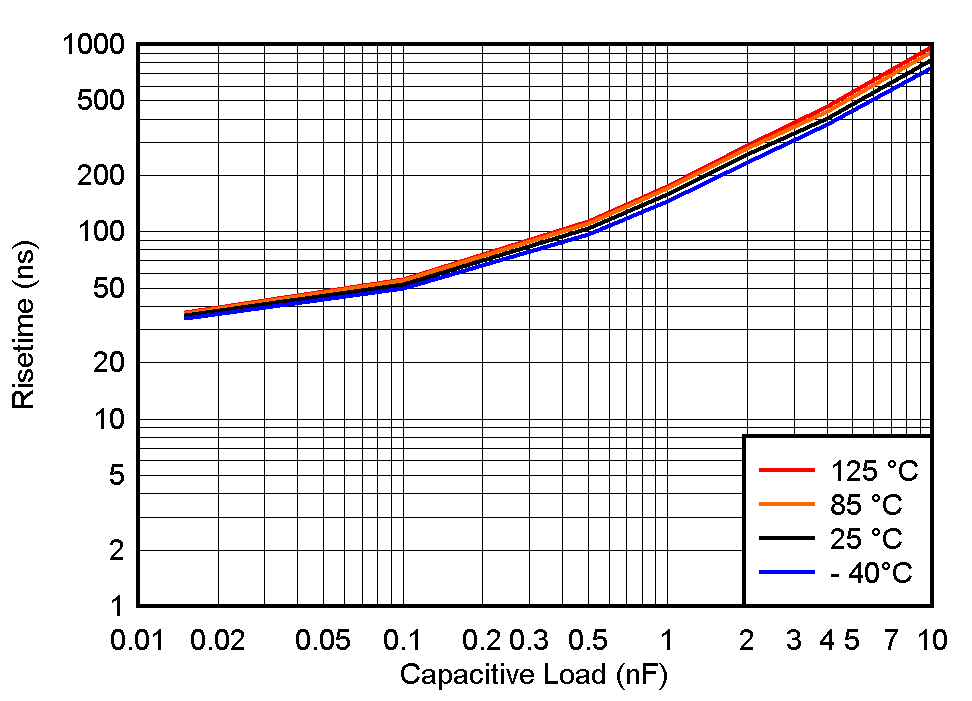
| VS = 3.3 V |
at 3.3V
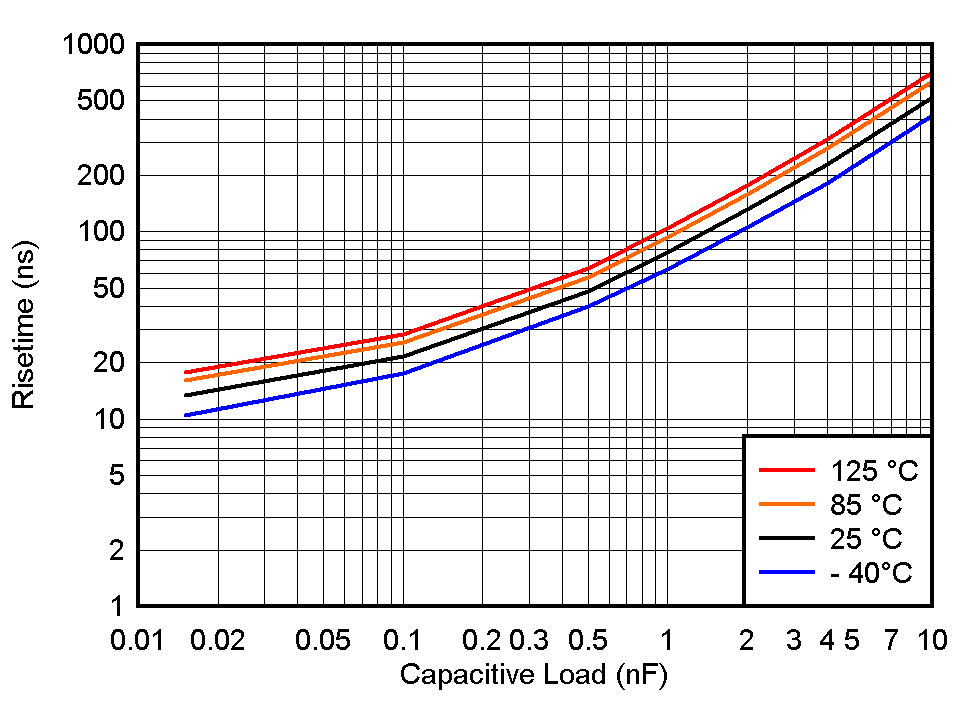
| VS = 5 V |
at 5V
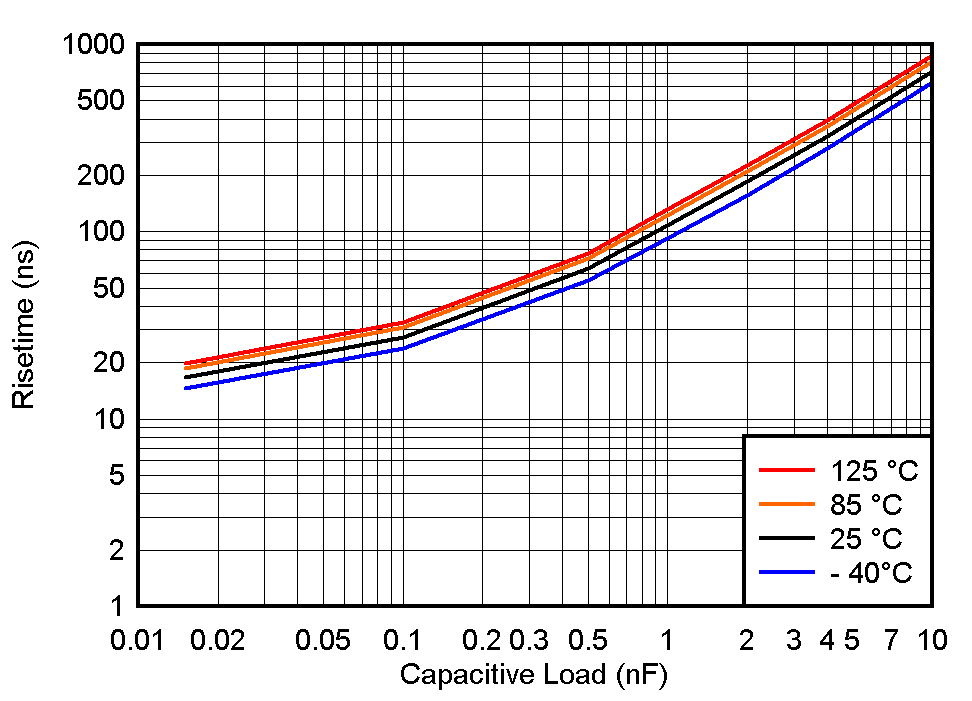
| VS = 12 V |
at 12V
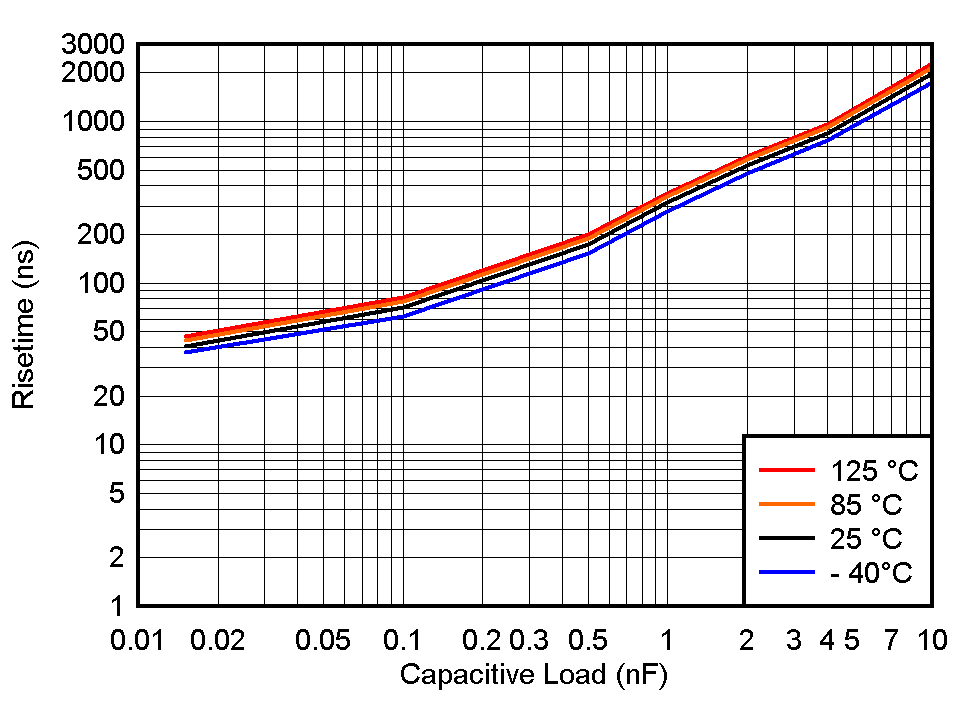
| VS = 40 V |
at 40V
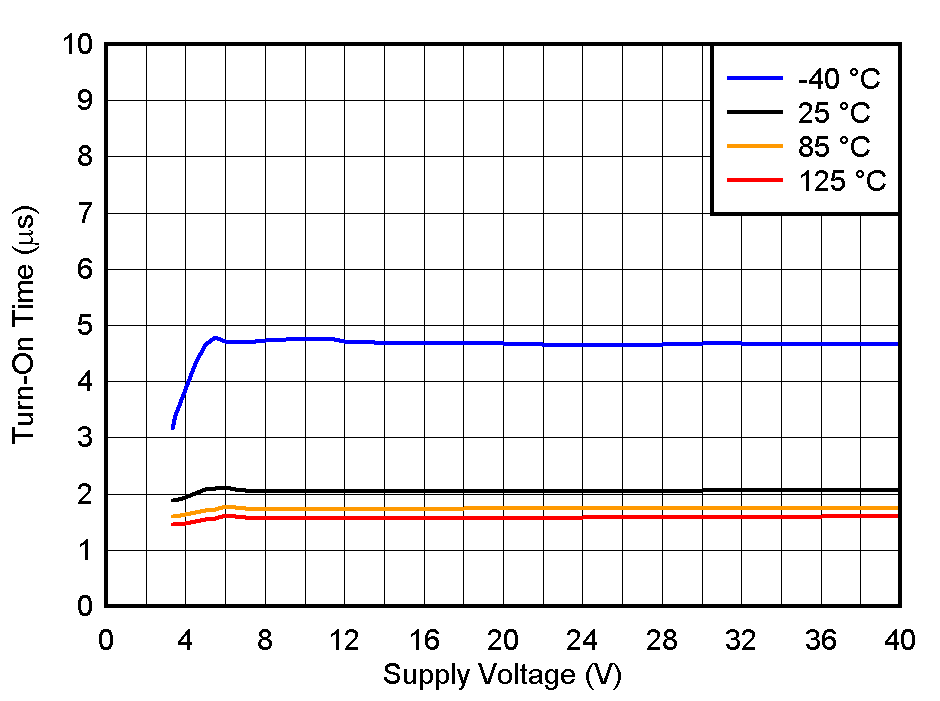
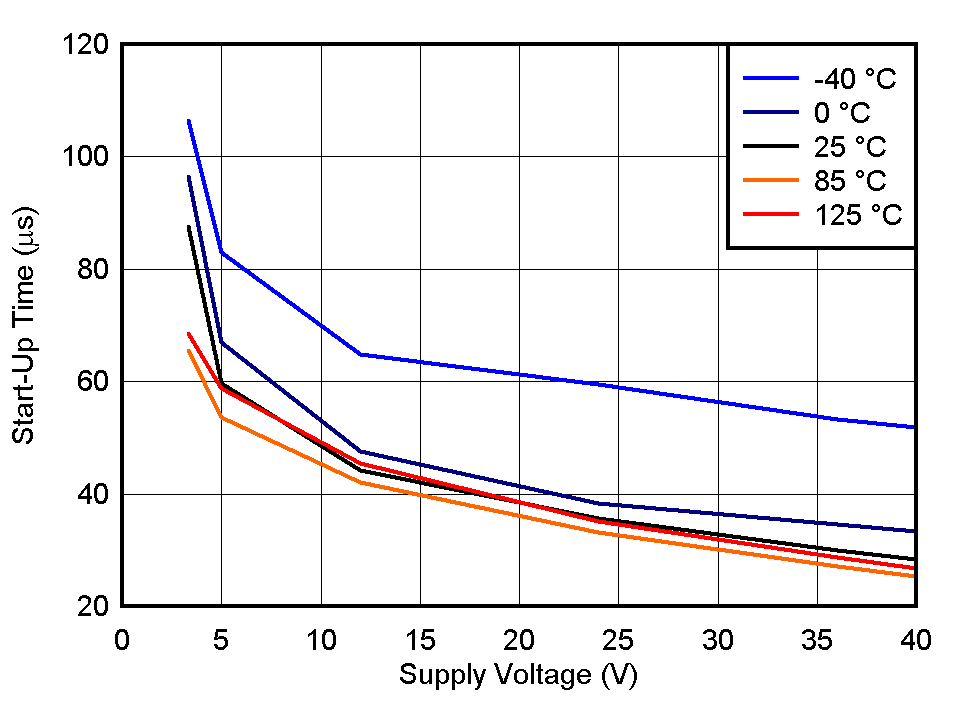
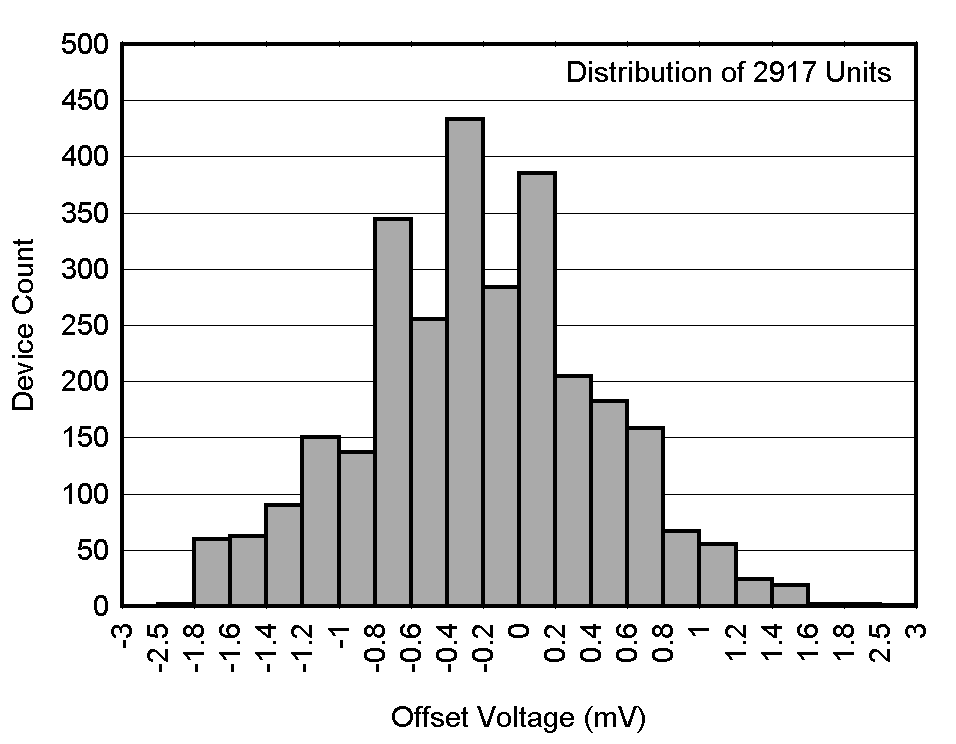
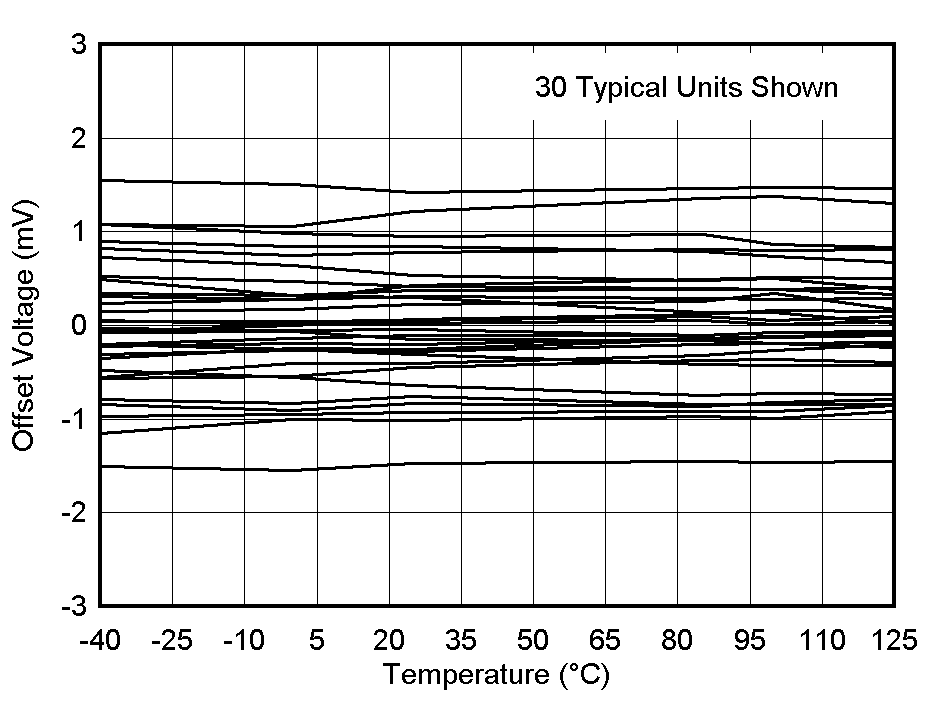
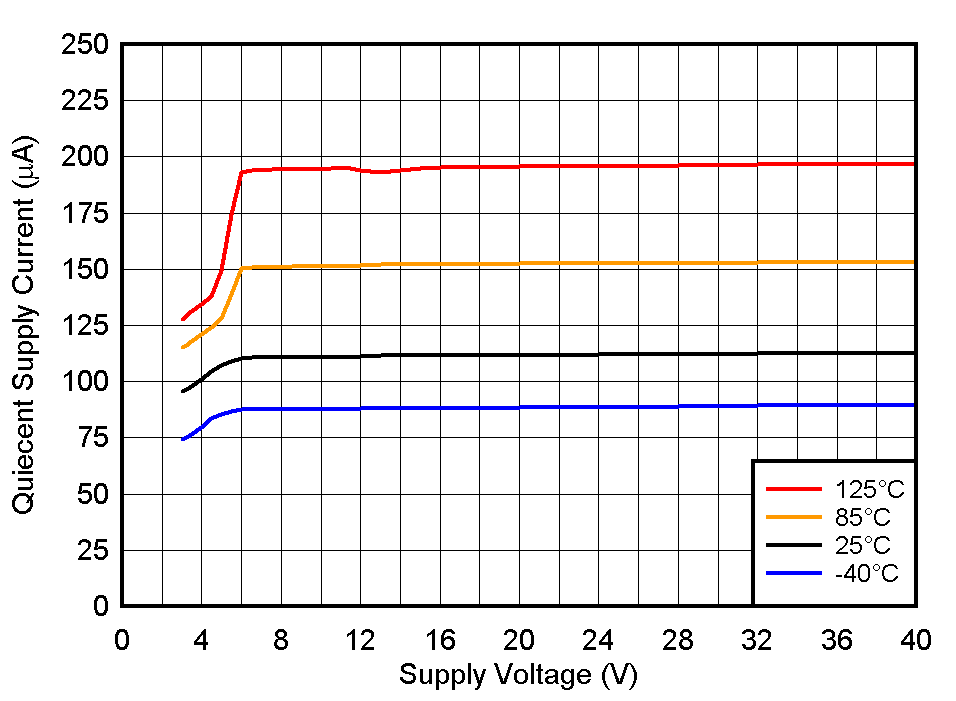
| VCM = V- | Output High (VID = 0.1 V) | |
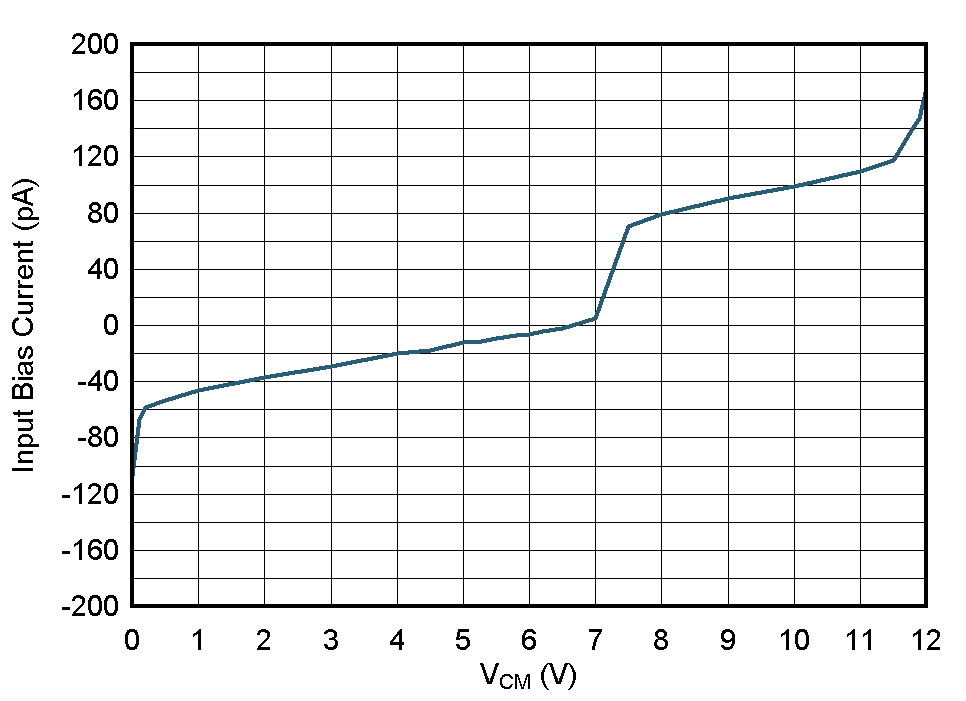
| TA = 125 °C |
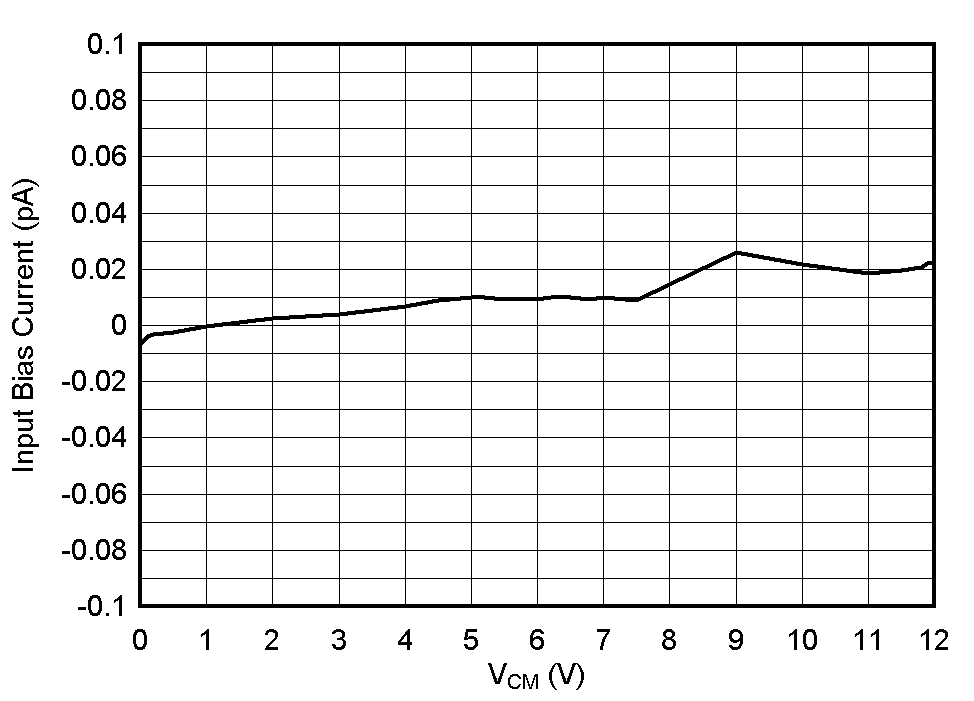
| TA = -40 °C |

A.
Figure 14. Shutdown Supply Current vs. Supply Votlage | VCM = V- |
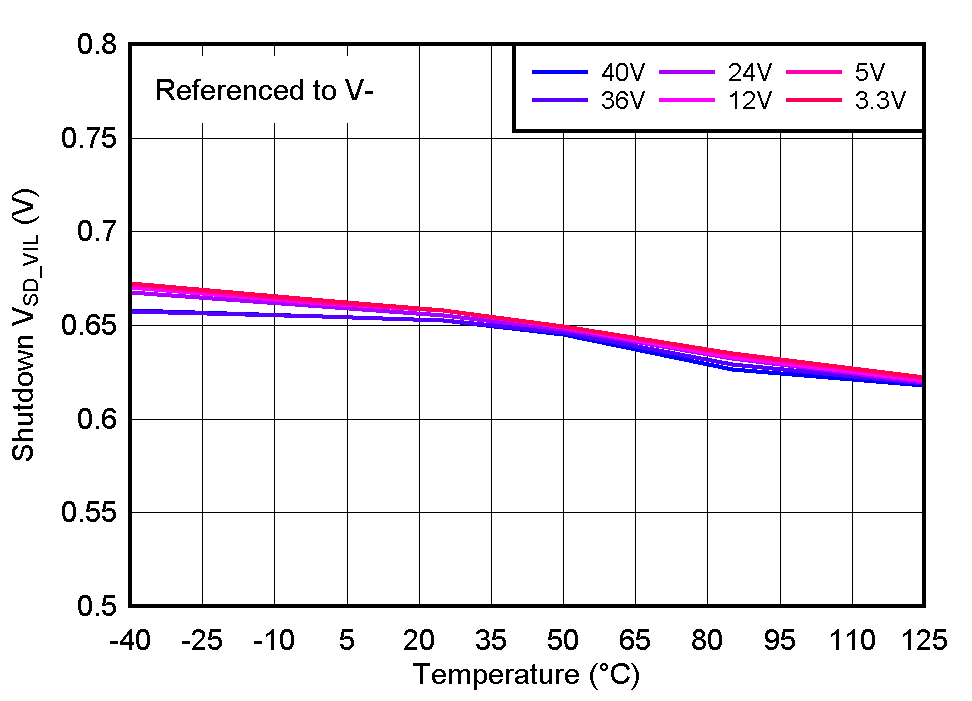
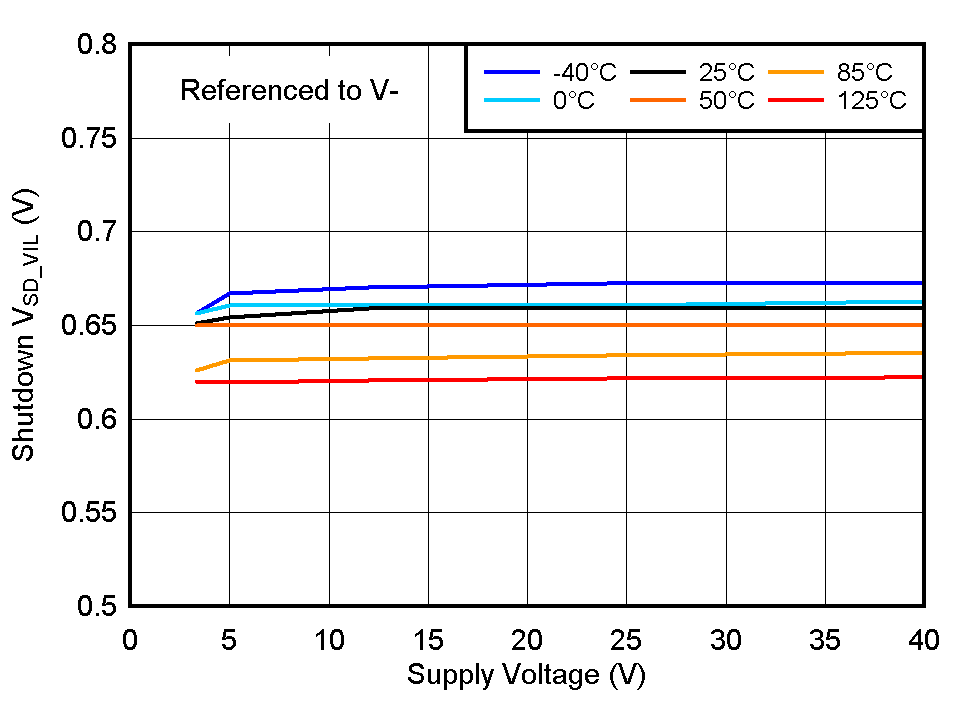
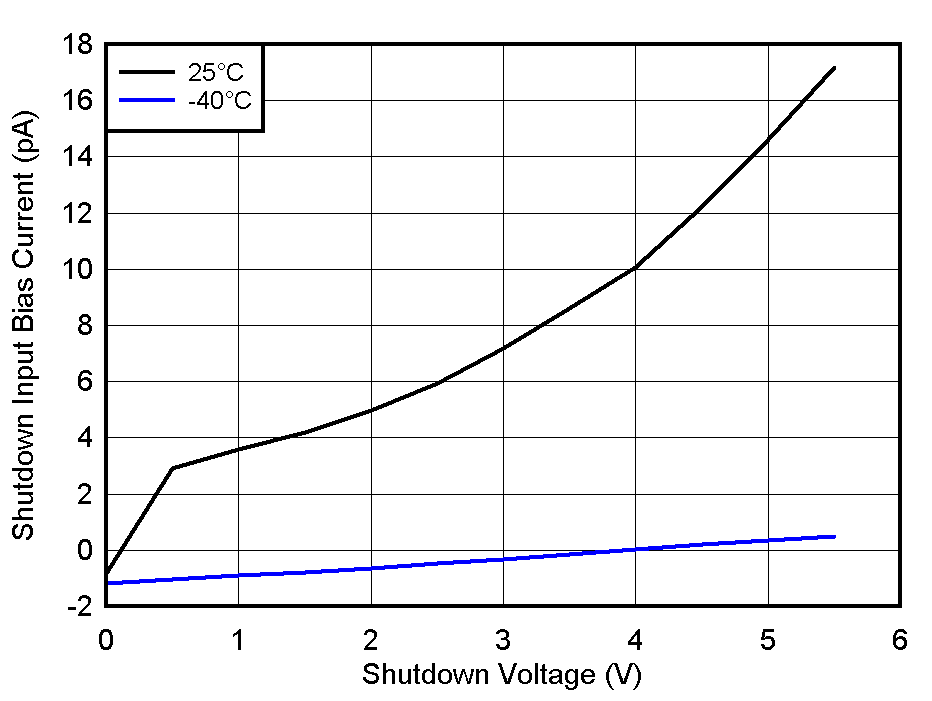
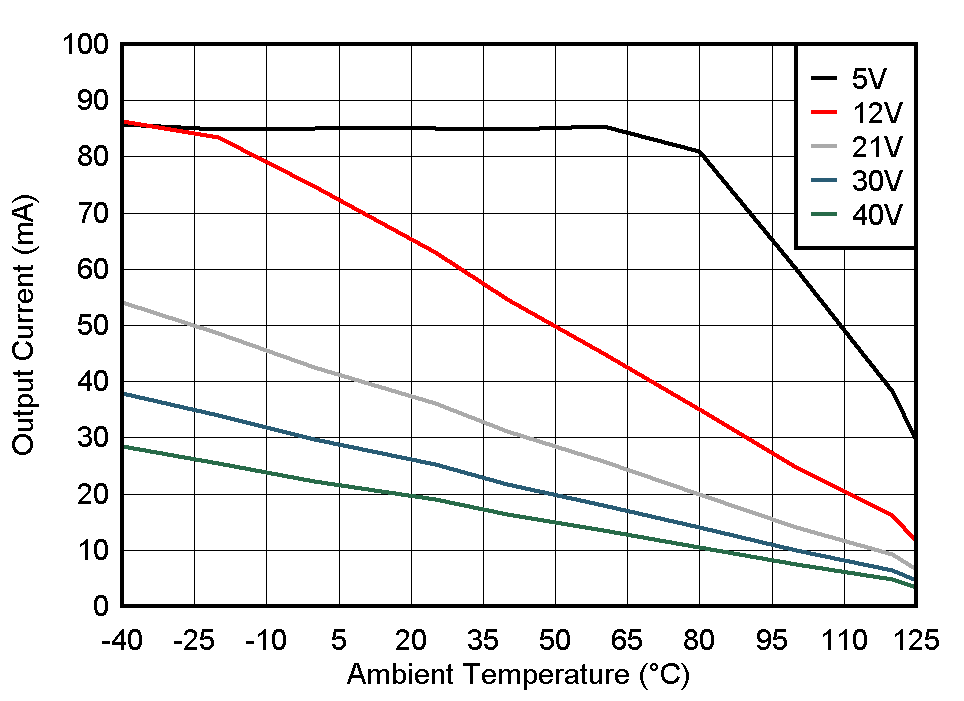
| DBV SOT-23-6 Package |
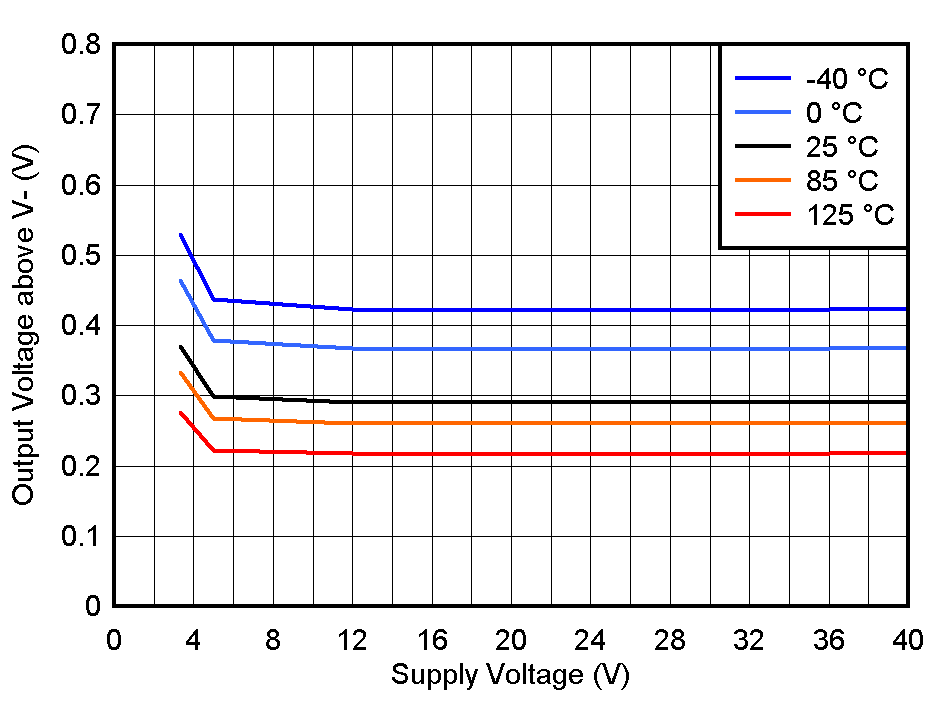
| ISINK = 1 mA |
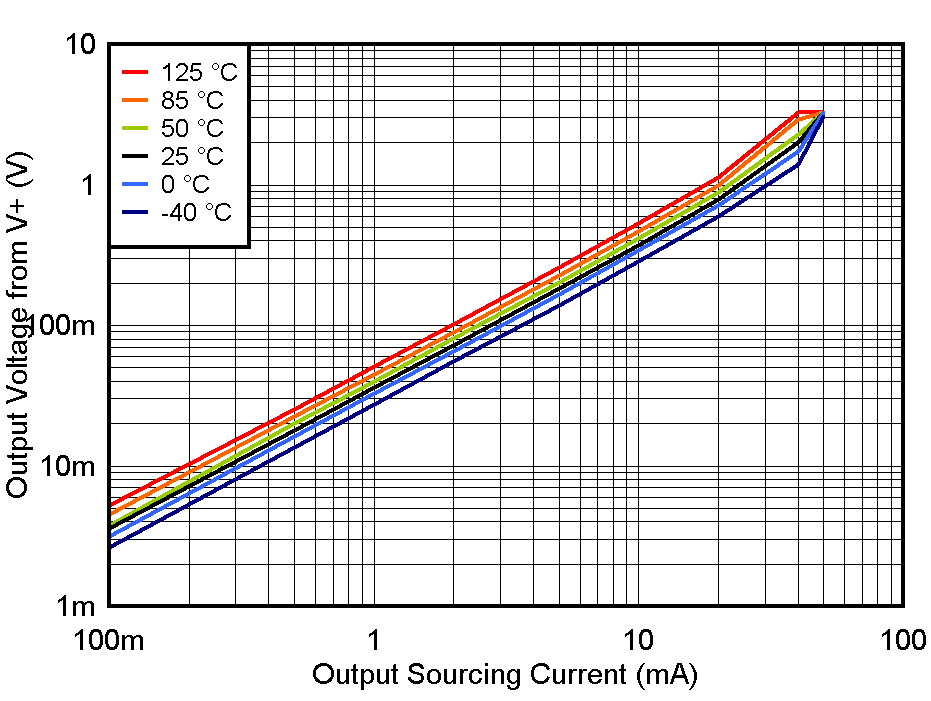
| VS = 3.3 V |
at 3.3V
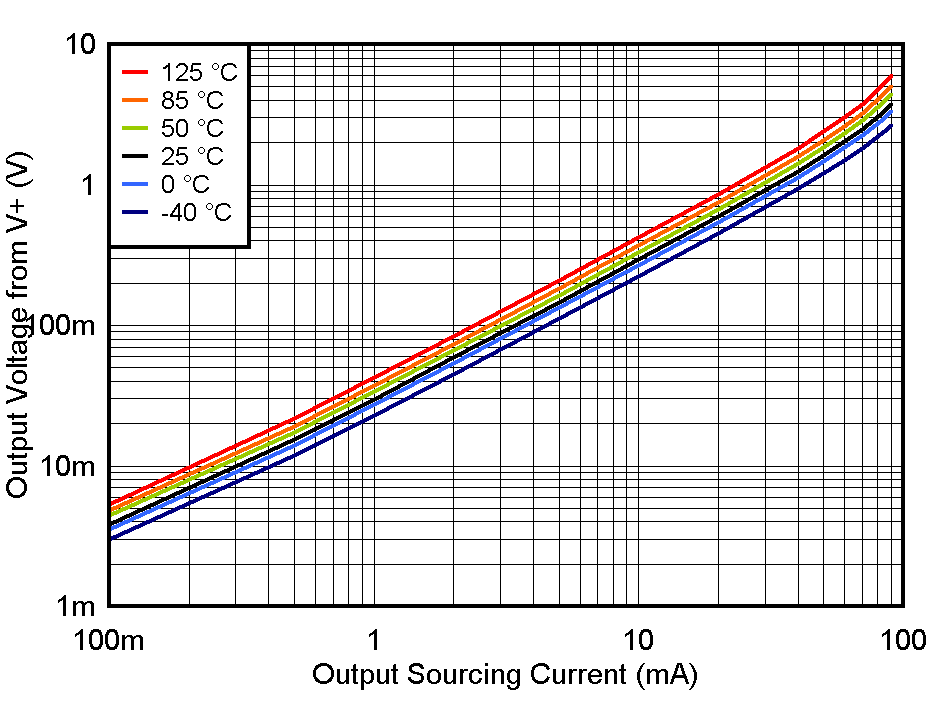
| VS = 12 V |
at 12V
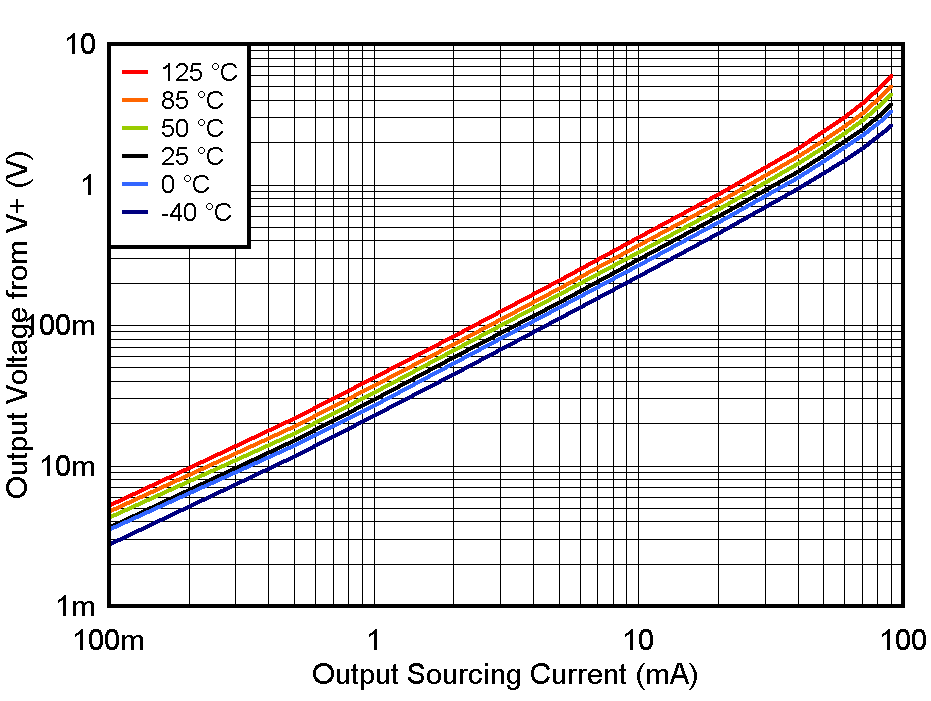
| VS = 40 V |
at 40V
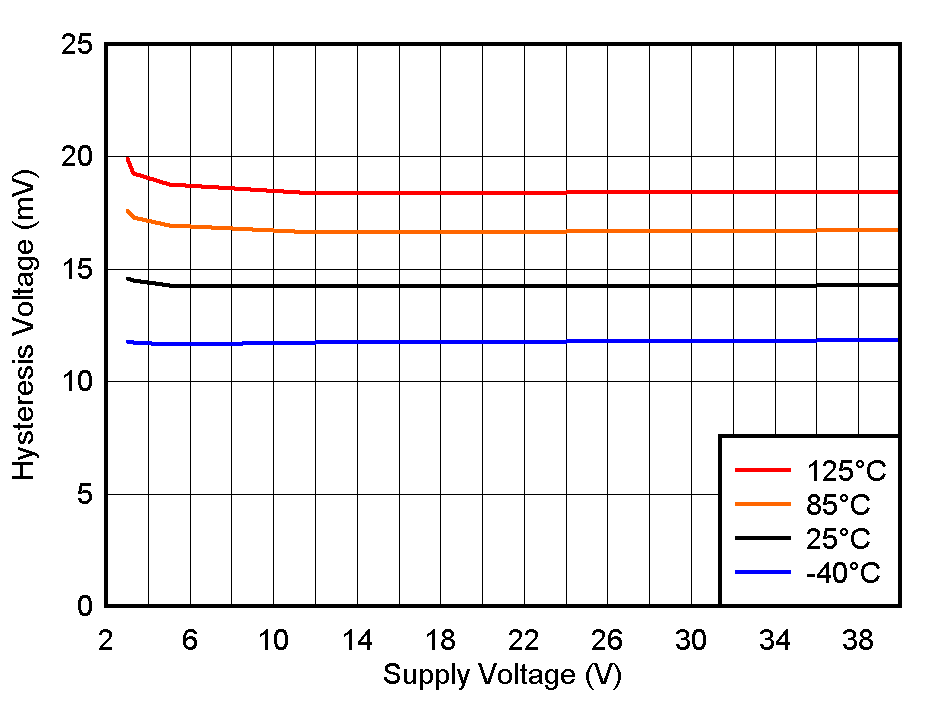
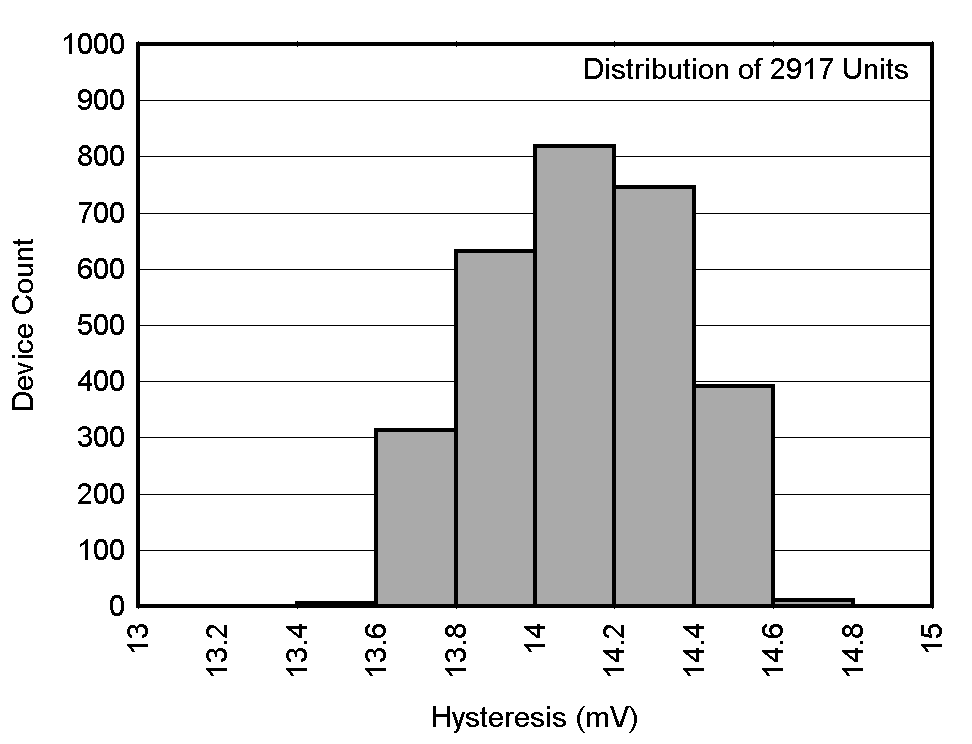
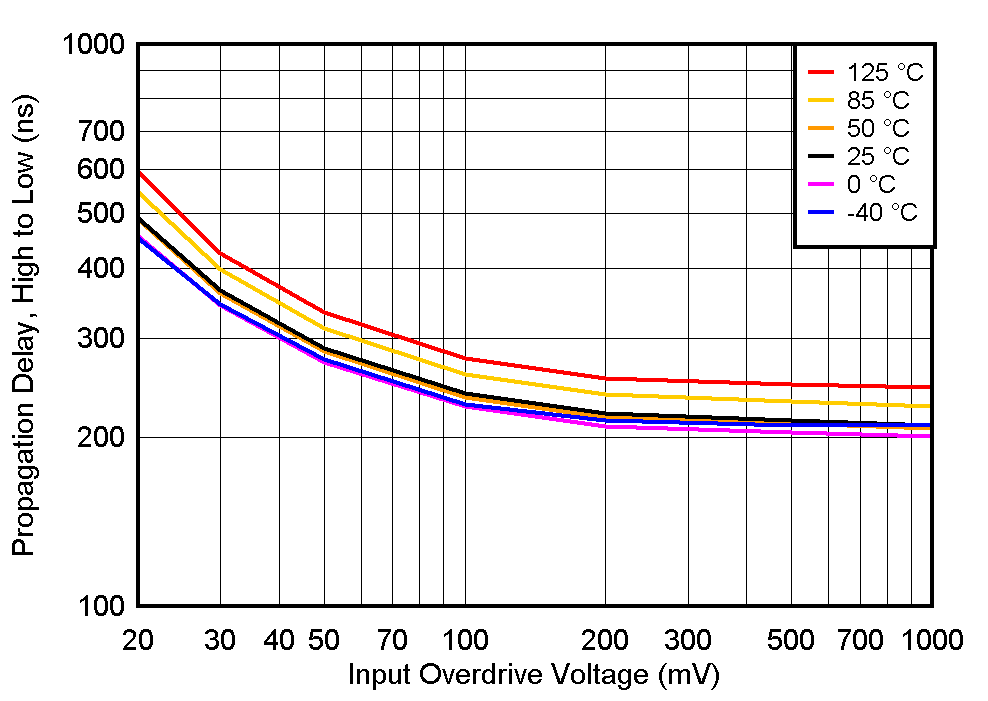
| VS = 3.3 V | CL = 15pF |
at 3.3V
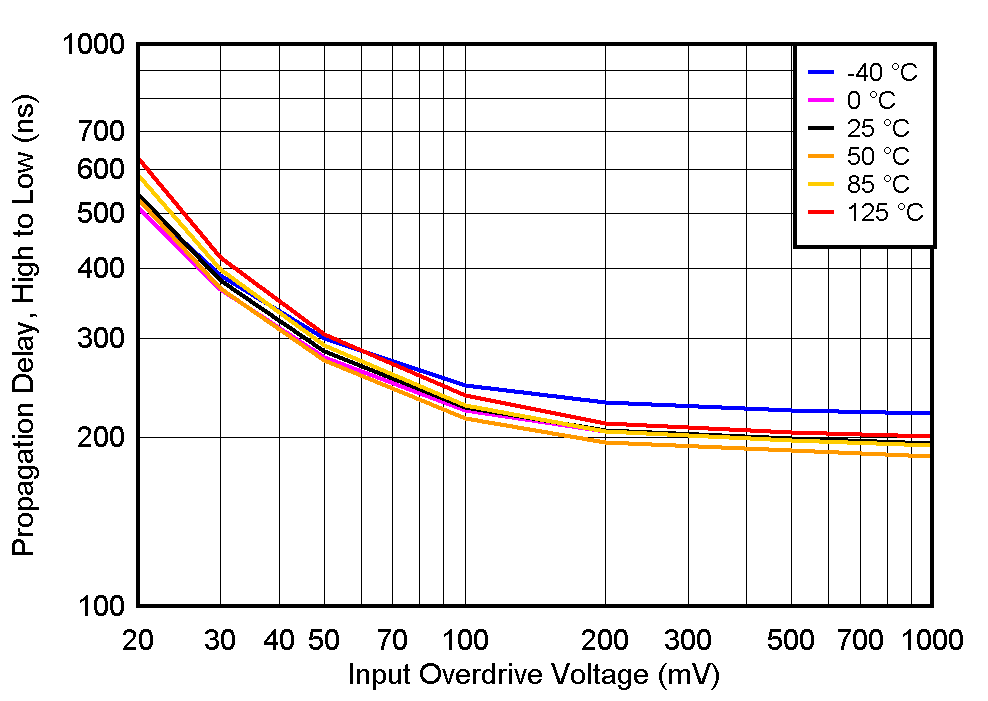
| VS = 5 V | CL = 15pF |
at 5V
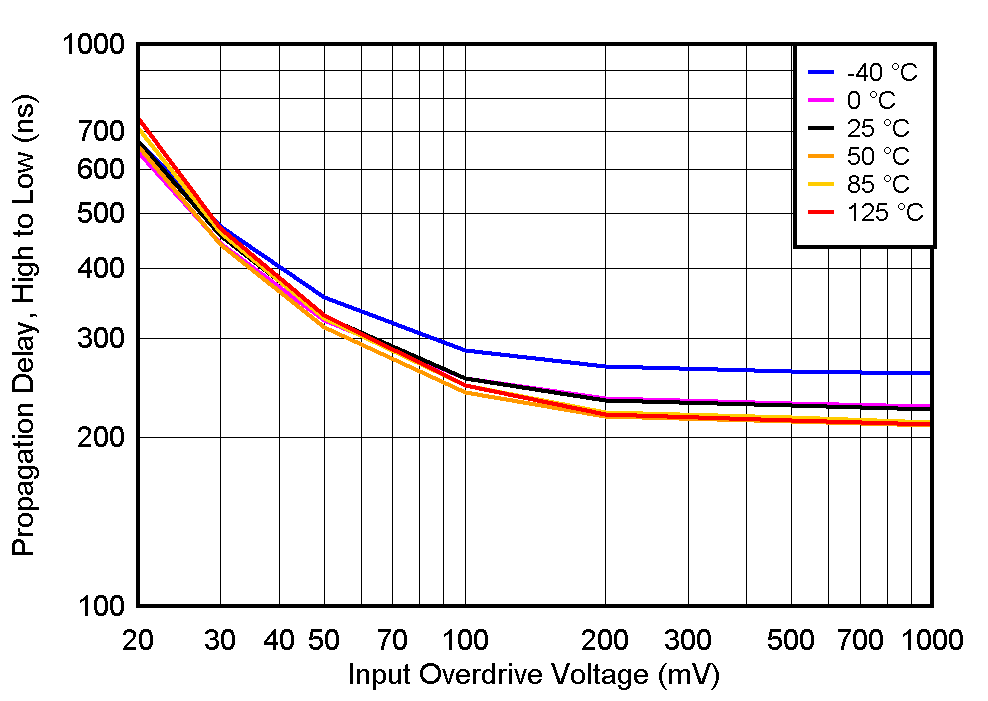
| VS = 12 V | CL = 15pF |
at 12V
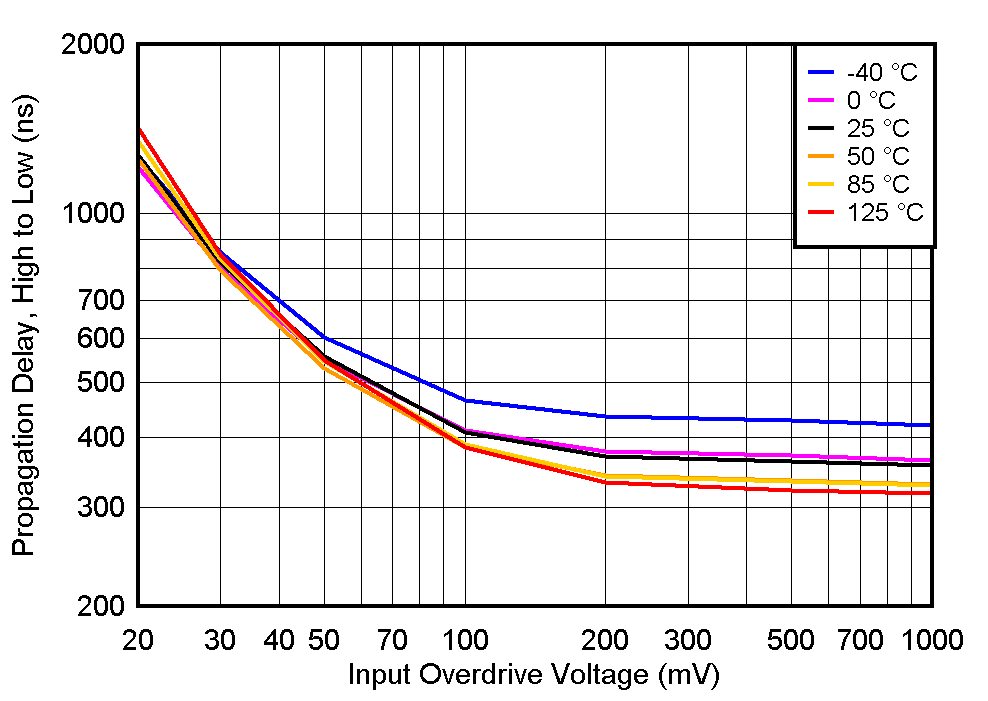
| VS = 40 V | CL = 15pF |
at 40V
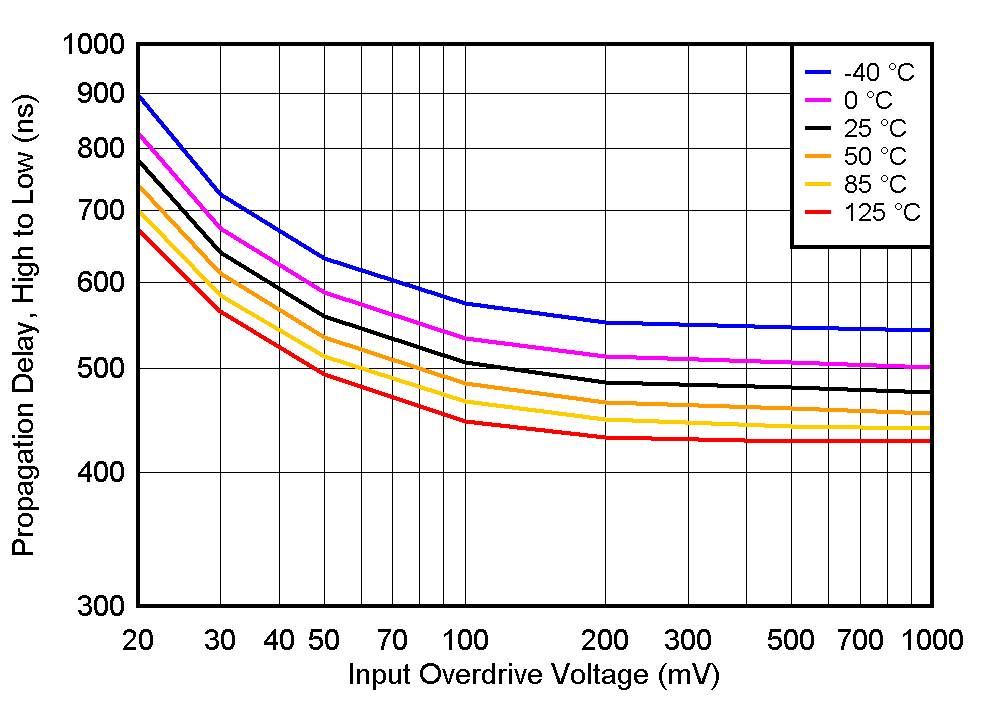
| VS = 3.3 V | CL = 4nF |
at 3.3V
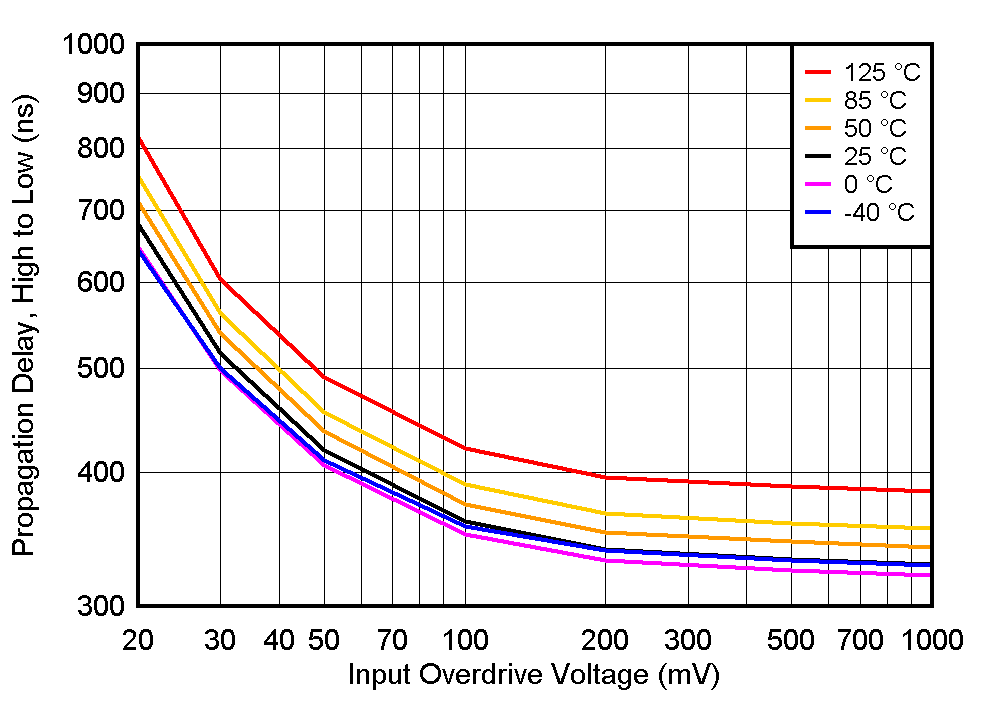
| VS = 5 V | CL = 4nF |
at 5V
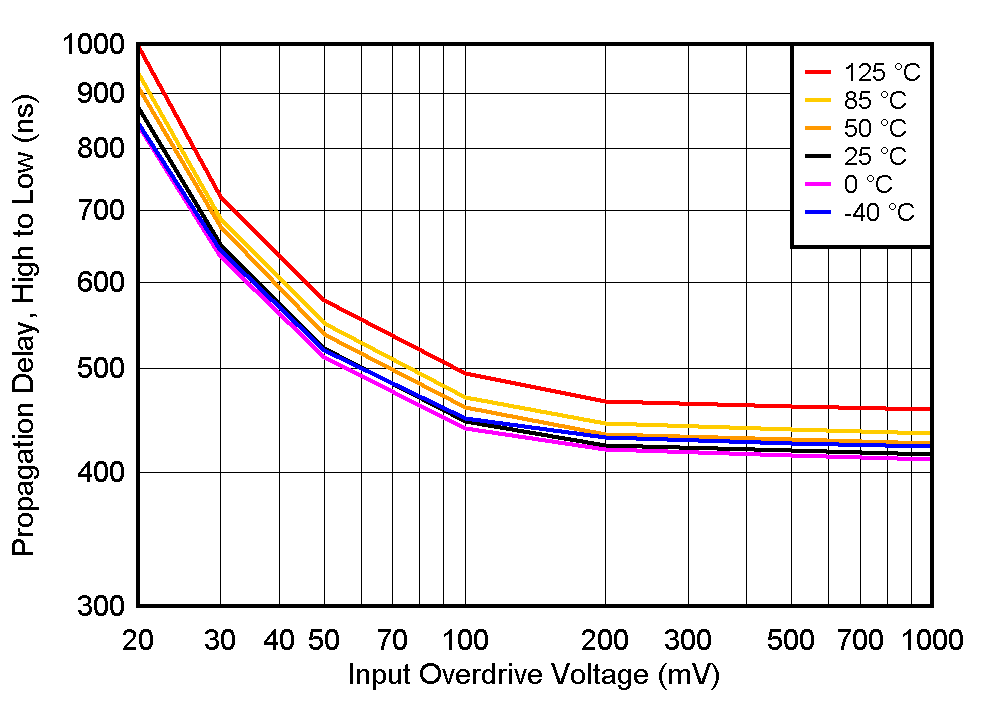
| VS = 12 V | CL = 4nF |
at 12V
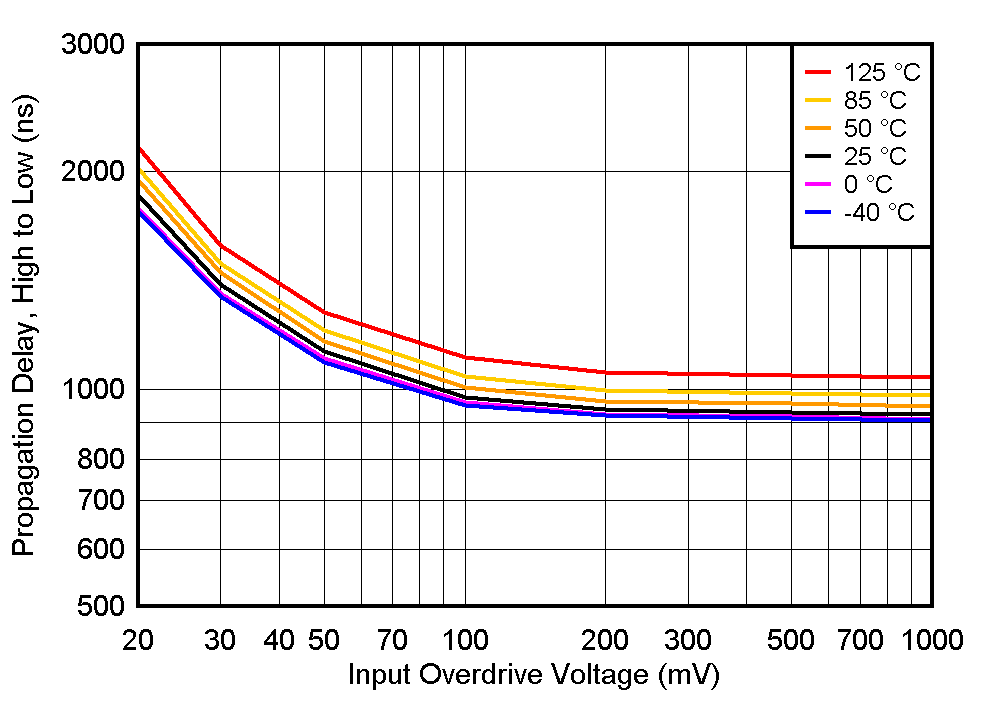
| VS = 40 V | CL = 4nF |
at 40V
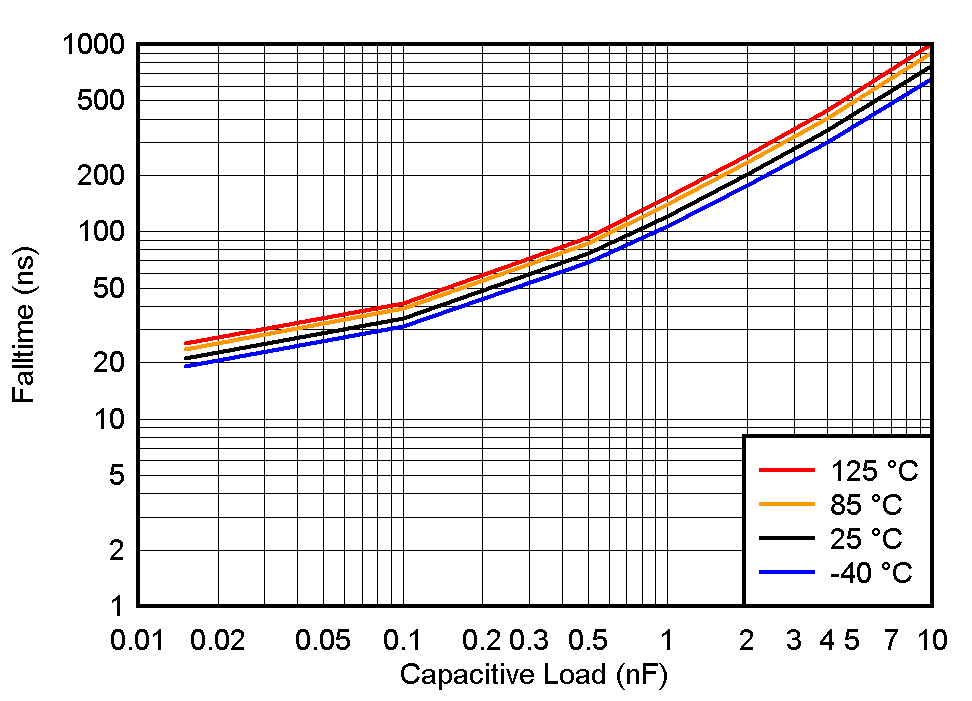
| VS = 3.3 V |
at 3.3V
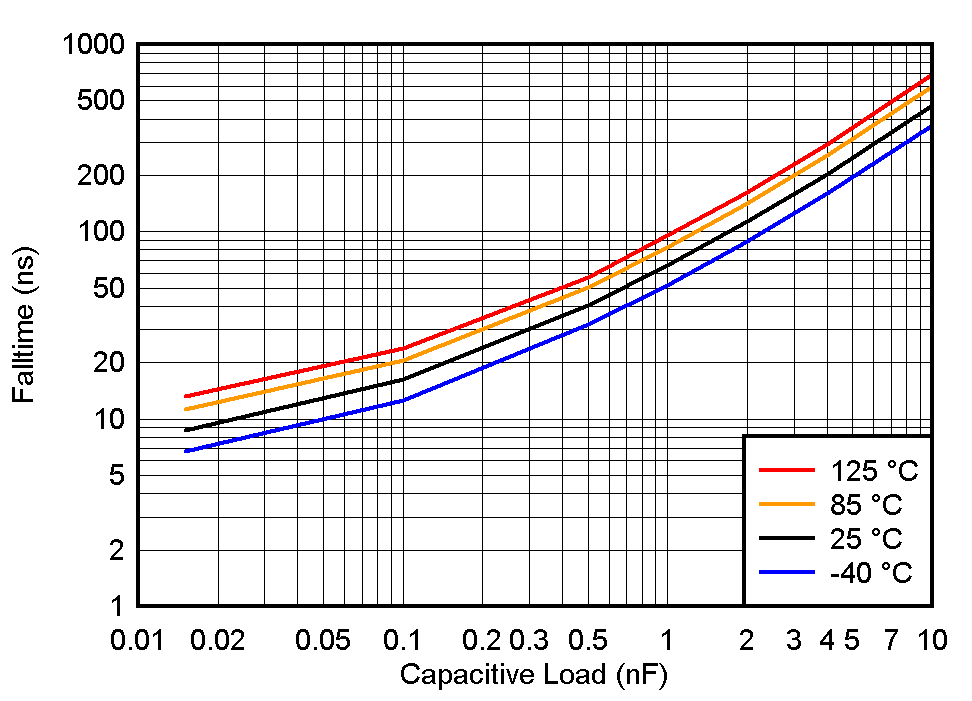
| VS = 5 V |
at 5V
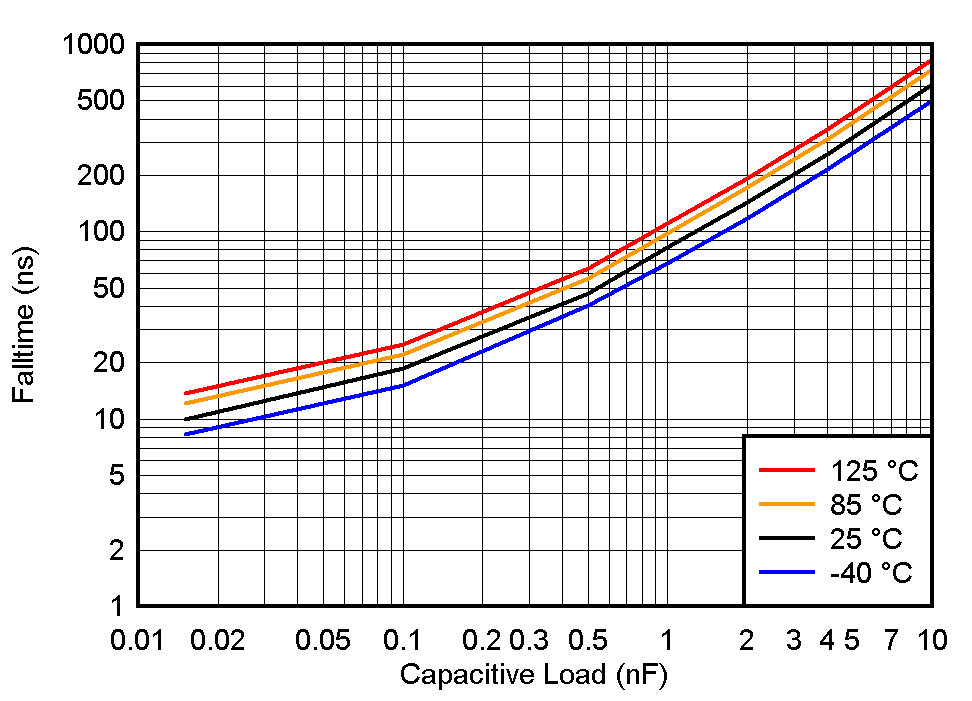
| VS = 12 V |
at 12V
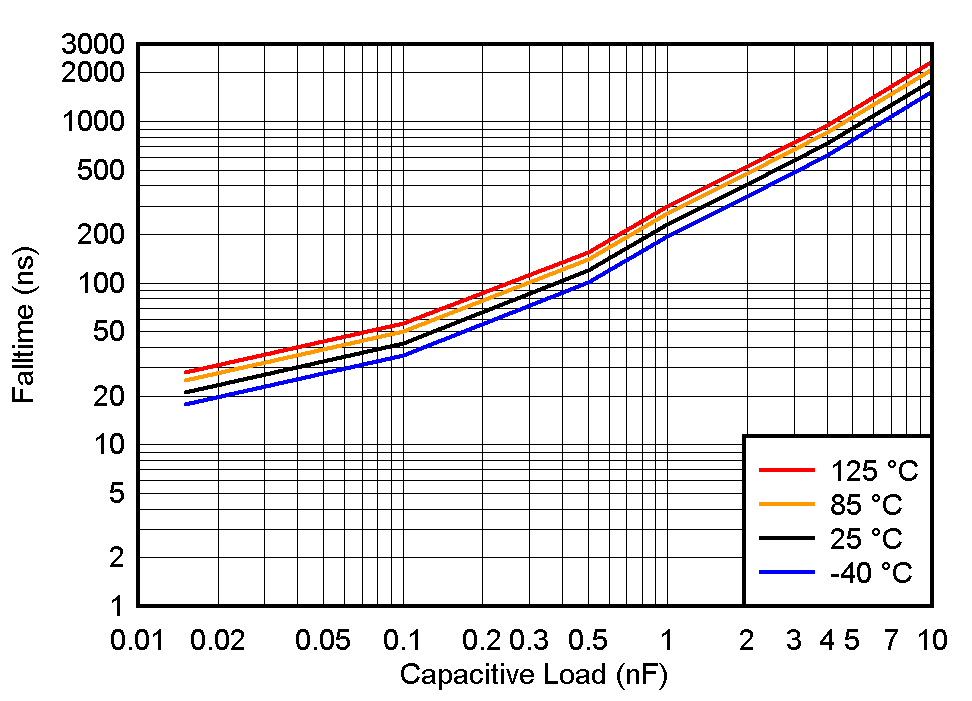
| VS = 40 V |
at 40V
